It finally rains in California and I find some quite time to finish up our blog about our recent Morocco trip.
This blog focuses on part one of our overall 4 week, 8,000 km trip – an off-road expedition through the Moroccan desert. These first 17 days were loaded with off-road training and workshops, organized by Expedition for Trucks. After these first 2,000 km, we spent two more weeks touring through Morocco on our own and exploring different cities and other areas – more to come about that in a future blog. Although we don’t like organized group tours, we decided to invest in this training since – A) we did not have much time to really prepare for this trip as we usually would and – B) we did not have any real off-road experience, at least not with a big truck like our ‘Guhonda’. Besides us in our EXCAP STEYR with KRUG cabin, the ‘expedition team plus trucks’ consisted of three more couples and a dog. Nancy, Hans and their dog Lucy, our Expedition guides in a MAN rig with ActionMobil cabin, Wilfried and Ulrik in a MAN with a Bimobil cabin and Jorn and Elles driving an the ‘prettiest’ truck, an EXCAP STEYR with Orangework cab.
After a 2,300 km trip from Germany to the southern tip of Spain, we met up with the group on a beach in Motril to do a quick briefing and then catch the afternoon ferry to the Melilla, crossing the Street of Gibraltar in about 4.5 hours.
From here on we relied on the GPS coordinates that Hans and Nancy, the owner of Expedition For Trucks provided to us every day. Using our Garmin RV 770 LMT-S GPS with the excellent Morocco map from the german publishing company ‘Reise Know-How’ that Hans had provided, we were set. As a backup we bought a great GPS offroad guide for Morocco from Pistenkuh that we hardly used, since Expedition For Trucks lead us through their pre-planned route through the desert. You can find more Morocco information on the Pistenkuh website, plus lots of offroad travel related infos & tips. Interestingly enough, according to Hans, our MICHELIN Morocco map is illegal and could have been confiscated at the border, since it does not properly reflect Western Sahara. Western Sahara, formerly the Spanish colony of Spanish Sahara, is a disputed territory claimed by both the Kingdom of Morocco and the Polisario Front. It is listed by the United Nations (UN), as a non-decolonized territory and is thus included in the United Nations List of Non-Self-Governing Territories.
We spent our first night on the African continent in Melilla, a Spanish enclave and left early morning towards the Moroccan border post to avoid the crowds. Although we were first in line, unfortunately ‘the boss’ who had to give us the last stamps for our fiche documents and passports was nowhere to find. Watching the chaos at the border, trying to figure out a pattern, all of a sudden somebody waved us through and we finally got a late start towards Bouarfa. Some of the trucks were casually inspected and luckily nobody cared about the loads of beer and wine we brought into the country, being ready for long ‘dry runs’ through the desert.
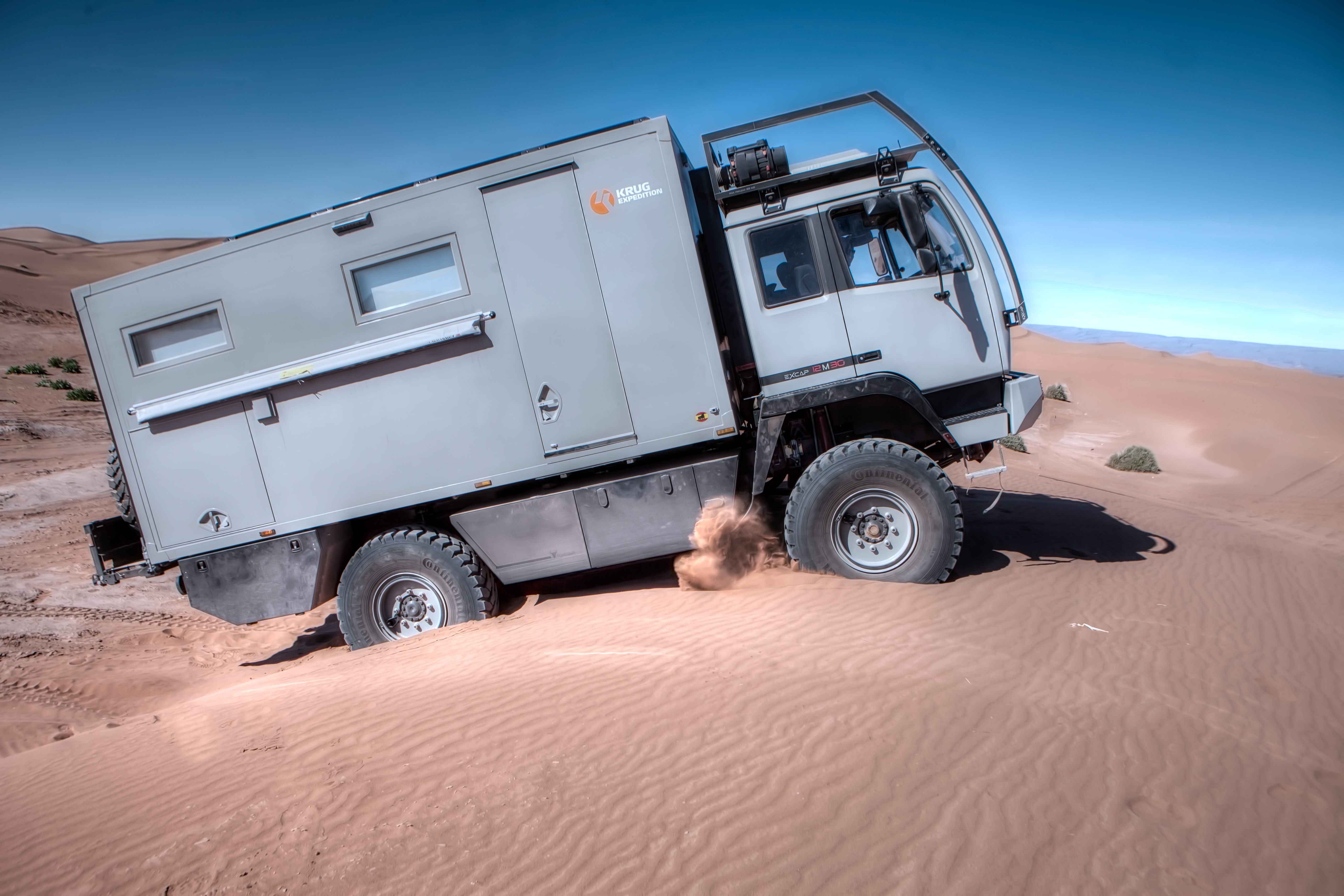
33°7’15” N 1°57’57” W – Somewhere between Ain Bni Mathar and Tendrara
The first day in Morocco we ‘clocked’ 395 km of excellent roads before we left the tarmac of N17 to pick a random spot for our first desert camp, enjoying the first moroccan sunset. We got some local moroccan dinars in a bank on the way, replenished our food supplies and topped off our tanks with cheap moroccan diesel, knowing that we would not have another opportunity once we hit the desert tracks the next day. We quickly adjusted to the moroccan way of driving. The locals drive very good and disciplined and compared to other countries it was very relaxed driving. Some roads are really narrow and I was happy that I brought some spare mirrors – which I luckily did not have to use – usually you bring the wrong spare parts anyways.
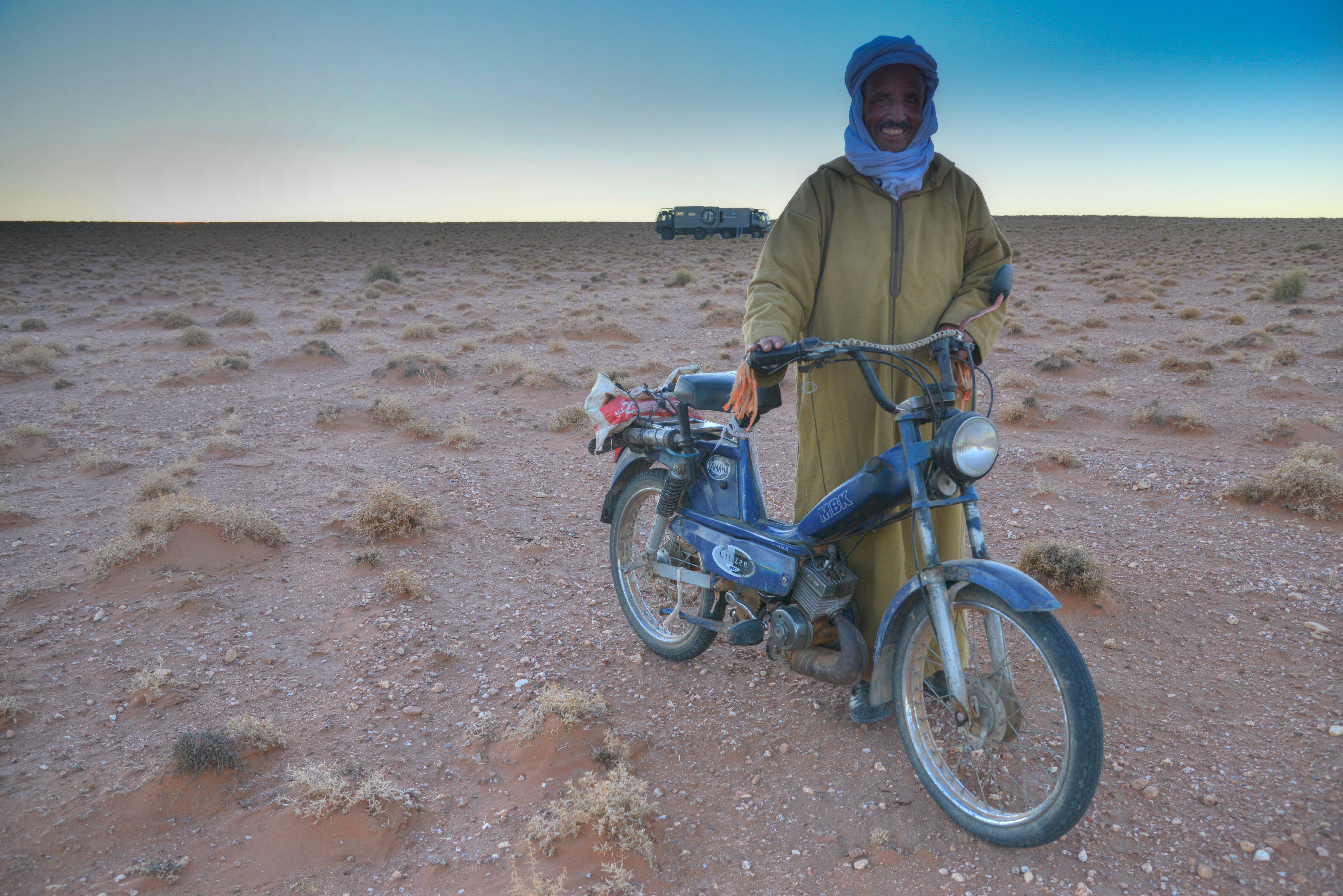
33°7’15” N 1°57’57” W – Erg Chebbi – North Side
After another 388 km on paved roads on the second day, we were finally face to face with the impressive dune fields of Erg Chebbi. We veered off the asphalt onto a piste, released our tire pressure to 1.8 bar front and 2.0 bar rear and drove on sand tracks to our rest place for the night.
Finally we could ‘release our Guhonda into his natural habitat’.
The truck felt like a boat, floating over the sand piste. Having the correct tire pressure makes all the difference and when getting into softer areas we even released some more air. I did not have to use any differential lock – just the low gear-group.
As an ice-breaker Ulrike and Wilfried pulled out a liter bottle of good German Schnaps to start the evening with a group toast and announced that they had 10 Liters of Goulash Soup to share. We felt bad with our basic supplies that would not have allowed to create a group dinner for 8. Lesson learned and for the next trip we will also stock-up a bit more – especially beer. Ulrike lit up a small fire to heat up the Goulash Soup and we enjoyed a great dinner in the middle of our ‘wagon fort’.
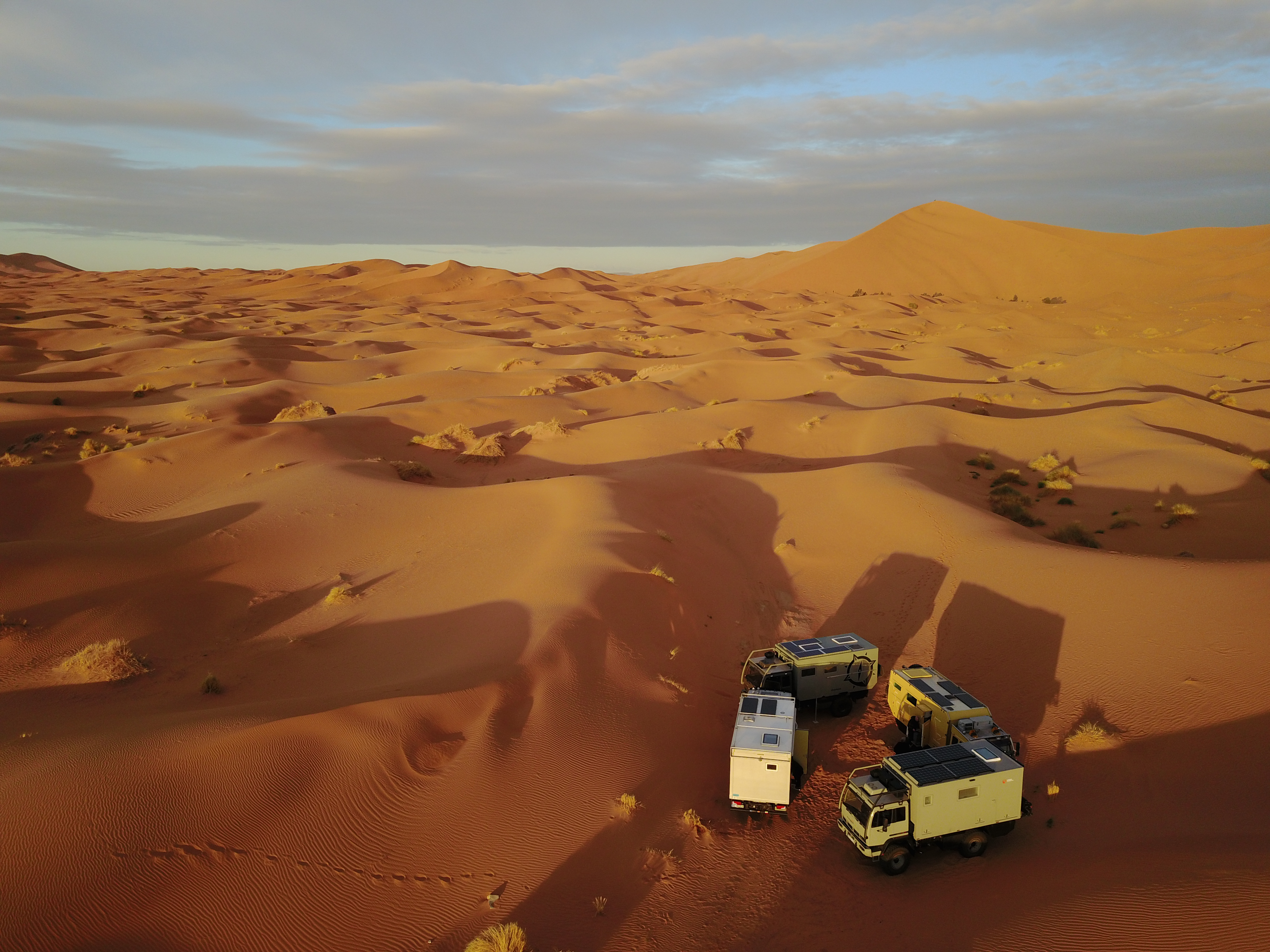
31°12’40.0″N 3°59’03.0″W – Erg Chebbi – South-East Side
The next day we were up to do our first exercises, driving and maneuvering on narrow tracks. The day went by fast and we just drove a couple of kilometers around the dune fields towards the south-east where we found a remote overnight spot right between the endless sand dunes. Here I realized why Hans had a scuba diving mask listed, besides tools and other stuff. The sky went from blue to eerie dark grey in a couple of hours from an approaching sandstorm. There is no escape and all we could do is close all latches and drink our beer inside, waiting for the wind to calm down.
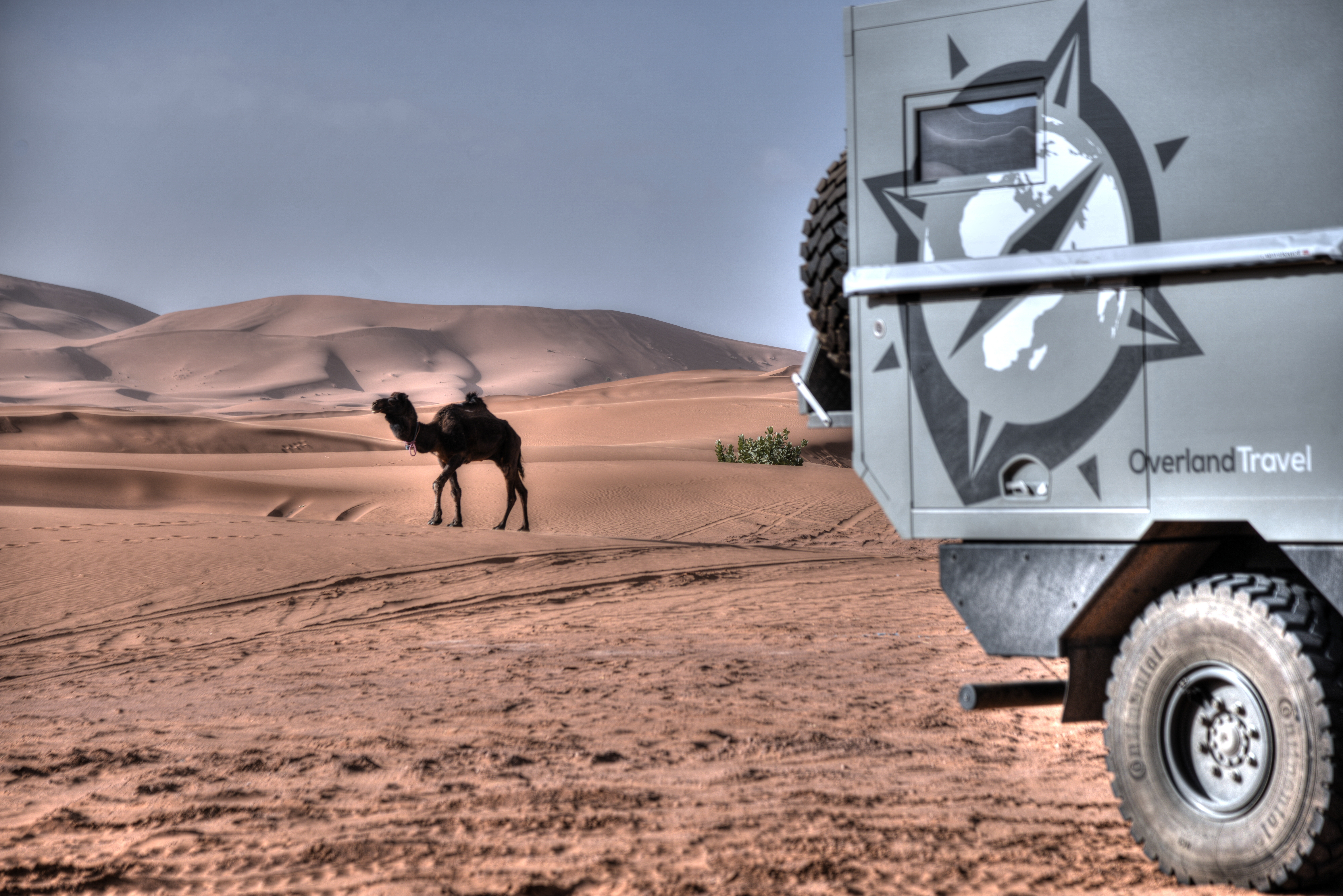
31°6’0″ N 3°57’4″ W – Close to Merzouga
We left the dunes of Erg Chebbi to drive parallel to the Algerian border, which was literally just a couple of meters away from the piste. Only recently a small earth wall was built to keep refugees out of Morocco. This part of the desert is very varied, the piste changes from hard and rocky to loose sand and dunes. We cross the dry Lake Maider at Tafraoute Sidi Ali. We heard that sometimes it is impossible to cross after strong winter rains.
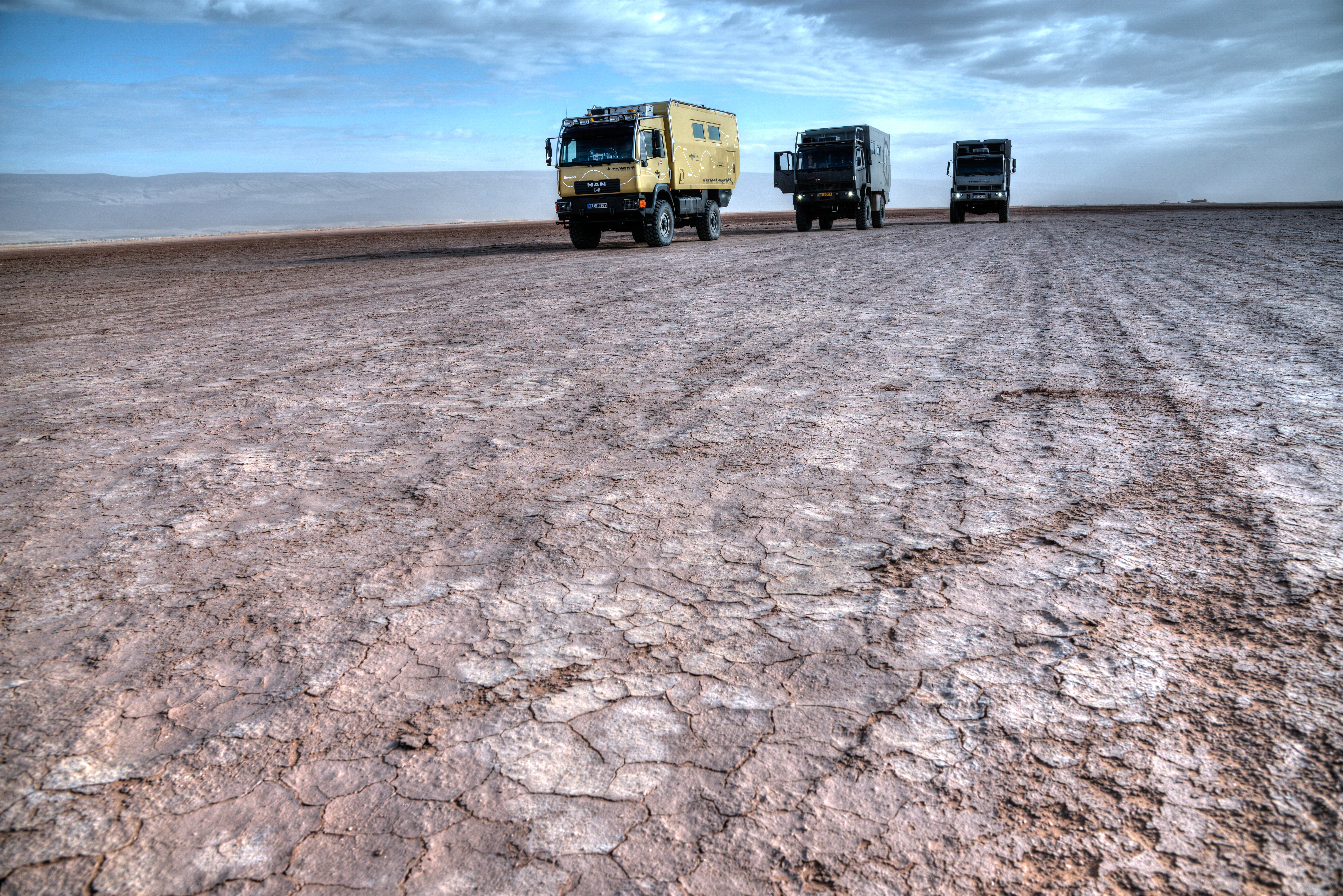
30°37’50” N 4°48’19” W – Tafraoute Sidi Ali
After Tafraoute the landscape became really harsh and monotonous and the tracks became harder and bumpier. The low tire pressure really helped to relieve stress on equipment and our backs – we just had to carefully watch for sharp rocks and avoid them by all means. We had to pass our first military check point. – just to check our fiche documents and to wish us a safe trip, smiling and saluting us. We have to turn off our VHF radios in the vicinity of the military check-points. The radio turned out being very useful for communication within our convoy of four trucks. I had bought a fixed VHF unit and a handheld device before this trip. Due to the tight timeline I was not able to install the fixed unit and the handheld device is doing its job with a range of several Kilometers.
We continue on a very narrow and stony track to a large former Salt lake. The recently learned maneuvering skills come in handy as we navigate through several hairpin turns. I am literally hanging out of the drivers window to watch the left tires and Emily looking out of the passenger window, yelling at me how close I am to ‘blowing up’ a tire on the sharp rocks. After mastering this small mountain pass we saw a dust cloud approaching us from the distance. It turned out to be Elmer and Nicole in their awesome STEYR, a couple we met during the Allradmesse in Bad Kissingen last year. They have a really nice truck and a great website with all kinds of good travel reports, tips and infos. We contemplated ‘how small the world is’ to randomly meet in the middle of desert, took some selfies and drove off in opposite directions.

30°05’54” N 5°18’44” W – Overnight spot close to Ktawa-Tafraoute-Sidi-Ali Piste
Breakdown in the middle of the desert
It was easy cruising along the Ktawa-Tafraoute-Sidi-Ali Piste, when all of a sudden my gear got stuck. I tried to shift up and could not move the stick shift at all. At the same time I saw a drop in my air pressure from the usual 8 to 6 bar. The truck was stuck in one gear and I could not shift up, down or into neutral. Trying to press and release the clutch several times, pushing on the gear lever with force – nothing helped. Since I could not shift into neutral I stopped and turned off the engine and radioed the others. The STEYR can only be started if in neutral – so now I could not even start the truck anymore. We tried moving the shifter with all force – but no success. Since my air pressure had dropped, initially I thought that this was the problem, since the shifting from the low to high gear group is supported by air pressure. So we tried to do some ‘mouth-to-mouth’ air supply from one of the other trucks, but realized that we had no fitting air hose. We looked through our supplies and created a make-shift hose that had the right connections to fit my air-intake and the other STEYR’s output. Unfortunately we did not manage to get the air pressure up. Jorn hiked up to a little hill, where he got one bar of cell phone reception and managed to contact Stefan from EXCAP via WhatsApp. I know he is a busy man, but he responded immediately – so credit to EXCAP. I also sent off an SOS to the STEYR Forum and the EXCAP WhatsApp group and got numerous quick responses – thank you in case you read this blog. Stefan immediately sent some pictures of how to short-circuit the neutral relays that prohibited to start the engine and some further instructions on what we should try to fix the problem. We bypassed the switch with a makeshift cable and I was able to at least start the truck again and get the air pressure back up to normal. So our Guhonda could move again – unfortunately still no chance to shift gears – limited to 12 km/h max speed. We loosened two air pipes Stefan told us to open as an attempt to unlock, whatever was stuck in the gearbox – no success. Jorn went up and down the hill multiple times to receive further instructions from EXCAP – I am not sure how many miles he walked that day. The next suggestion from EXCAP was to disassemble the shifting mechanism on top of the gear box. In theory a small endeavor, since it is only attached by 8 screws. The problem was the location. In order to access this component, we had to lift the drivers cabin. So I disconnected the bulb between living cabin and was ready to start pumping up the cabin, when I saw Hans already busy pumping. While I started yelling ‘STOOOOOP – you have to release the mechanical lock before pumping…’. I heard a pop and saw a stream of hydraulic oil squirt out of our truck. The hydraulic pipe for the cabin lift just exploded – so we could not lift the cabin anymore. ‘F..k’. An attempt to lift the cabin by attaching a towrope to the roof-rack turned out to be even more stupid than the previous disaster. Not being able to lift the cabin we disassembled the mud flaps to barely reach the shifting mechanism and managed to unscrew it. We tried to somehow ‘unlock’ whatever was stuck – but were unsuccessful. After several more WhatsApp communications and exchanges of pictures and instructions of other things to try, I decided to assemble everything back in place. It was getting dark and we still had to cross a windy pass. I was in low gear reduction and the maximum speed with the stuck gear was 12 km/h. The closest paved road, N9 was only around 50 km away, the nearest town around 100 km. I really did not want to get towed over a mountain pass and calculated that I could make it to the paved road by 11:00PM.
30°04’11” N 5°21’37” W – Breakdown Point
While crawling thought the desert, the others went ahead and had already called a mechanic in Zagorra, who they knew from previous trips and provided him with our GPS location. We stopped short of the intersection with N9, made some dinner and waited for the mechanics to arrive while eating. Out of the dark we saw a wall of light coming towards us – the mechanics in two LANDROVERS with more LED lights on the top than tools in the back. After Nancy, the only one speaking french, told them what happened, the three mechanics went straight to the spot that we had dissembled before. I did not feel optimistic that they could fix the problem, especially when I saw them dropping parts into the desert sand and asking me to lend them some tools.
‘Try now’ I heard one of them yell in broken english after almost an hour. I immediately jumped into the cab – the mechanics still squeezed underneath the truck – and to my big surprise – the shifting worked better than it ever had before. After a short test ride in the dark, confirming that all gears are working, Emily got shaken up pretty badly in the back of the cabin. I was so excited that I just closed the door and took off into the night. Fortunately Emily had locked all the drawers and cabinets and got away with no bruises. The only casualty from the bumpy night ride was my iPhone, which was lying on the table.
Since the ‘night surgery’ was quick and dirty and the cabin lift was still broke, we decided that Emily and I would follow the mechanics to Zagorra, to spend the night there in front of their shop and then get the remaining issues fixed the next morning. The others would be driving towards Mhamid, where we supposed to meet up again after the repairs were finished to continue our tour together.
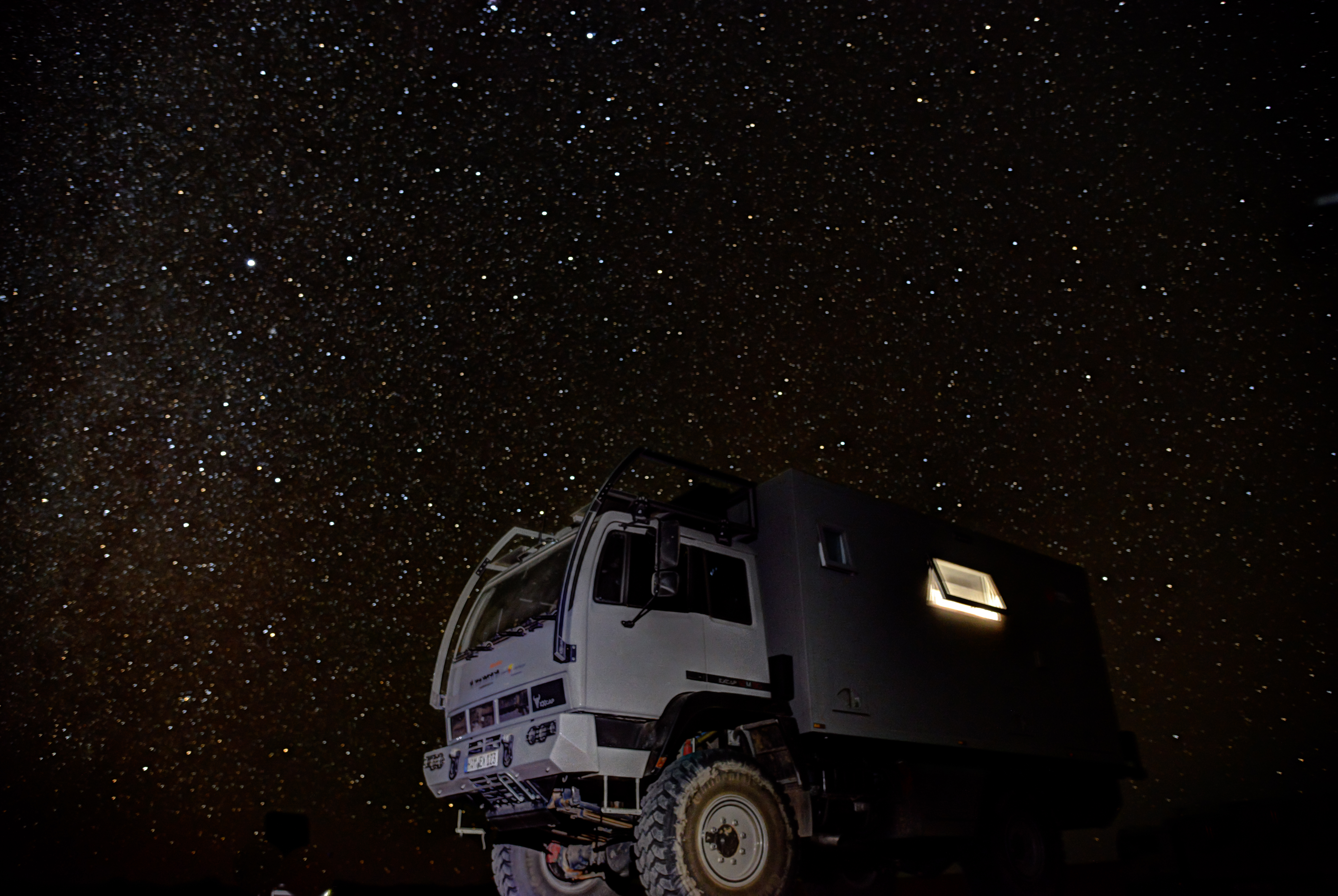
‘Never drive in the dark in Morocco’ was one thing I remember reading – so here I was, following the mechanics LANDCOVER through the dark towards Zagorra. According to Nancy, she had told them to take it easy and wait for me – but after a couple of Kilometers I could not see their tail lights anymore. I was already giving it my best after a tiring day and a fresh surgery and Guhonda just out of surgery – driving around 100 km/h. Good thing there were no merges and they waited for us on one of the first roundabouts in Zagorra, to guide me to their shop. We spent the night right in front of the shop and exactly at 8:00 AM Ali and his team started working on our truck again. We had to leave latest by 10:00 AM in order to catch-up with the others in Mhamid. I was assuming that they just wanted to get a new hydraulic pipe and fix the cabin lift, but they started taking apart the entire shifting mechanism again, which they had fixed the night before. As anticipated the initial fix was just a ‘quick and dirty’ job to get me going and now they wanted to clean everything, put proper sealings and correctly assemble everything. For the little money I paid, Ali and his team did a great job and I can only recommend his shop Garage Ali Nassir in Zagora. Just remember – negotiate the price before the job. I definitely keep his contact info – he ‘saved our day’ – better – the rest of our vacation. As a matter of fact we met a German guy with an old Magirus truck in Marrakesh, who had a sticker from Ali on his truck. He told me, that he always goes to Ali’s shop for maintenance and repairs, since it is much cheaper than in Europe or elsewhere . Time was ticking and I still did not see any action on the cabin lift. It was already 10:30 AM, Emily had already bought some food supplies in town and I had filled the water tank, ready to rush towards Mhamid, when I saw them start disassembling the cabin lift. I told Ali via sign language to hold off on that and put everything back together again. We could continue without a functioning cabin lift for now. I was not sure if the cabin was safely locked into place with the hydraulic being broke. Allthough there is a mechanic safety lock, we secured the cabin to the frame with a strap – just in case – and off we went towards Mhamid around 11:30 AM. We were late – so Guhonda had to give his best on this 100 km stretch between Zagorra to Mhamid to allow us to catch-up with the others .

30°20’47.7″N 5°50’15.3″W – Garage Ali Nassir, Zagora
You might want to know what the diagnosis for the shifting problem is. When talking to Stefan from EXCAP, back in Germany, he told me that there is a known issue with the height of the lid for the shifting mechanism, that we supposed to unscrew. There are three metal plates underneath the lid, which should be free moving. According to him, extreme heat can cause the plates underneath the lid to get stuck because there is not enough space between the lid and the plates. An easy fix supposed to be, putting a slightly thicker sealing between the lid and the shifting assembly to allow more space for the plates underneath to move. An upgrade, installing some oil lines, to cool that particular area should help prevent this problem as well. Holes to attach oil lines already exist – but the oil lines are only installed in certain models. So I am definitely getting that upgrade.
29°49’44” N 5°41’50” W – Close to Mhamid
We finally caught up with the others and before moving on had to quickly reduce our tire pressure, using the STAUNT tire deflators that I had bought before the trip. They turned out to be the most useful accessories to have. We had a blast crushing through soft sand from Mhamid towards Erg Chegaga. There was a lot of vegetation, which is unusual in this arid area and an indication that there must have been of a lot of precipitation in the previous weeks, unusual for this area. Maybe because of this excessive vegetation we saw many camel herds along the way. They must be happy having to have some change from their usual dry desert diet.
On the way to our overnight spot we played around in the sand, getting more adventurous and ‘attacking’ bigger and bigger sand dunes. Wilfried was the first to get stuck with his MAN. We unpacked our shuffles and got to work. It felt like we relocated an entire sand-dune before he finally could get out. His truck had the least ground clearance and a spare-tire underneath the chassis did not help, neither did he have special off-road tires, like the rest of us.
The spot between the red dunes of Erg Chegagga was my favorite overnight stop of the trip. The vast dunes are just amazing and seem to change color by the hour. Besides doing clinics on tire change (with rim and without) and toeing and rescue this was the first time we had some time to play around.
So off we went into the endless dune fields – even Emily drove the truck in this isolated area, where the only thing you had to watch for were camels. The entire trip we were in ‘drone heaven’, but I did not much time to use it yet. Here I could shoot some longer truck driving sequences until I crashed the drone, flying sideways into a dune. Like everything in the truck, the drone was full of sand and it took me some time to get it to fly again.
Unfortunately it was not all about playing and one of the workshops in the itinerary, was taking off the tire from the split rim. In theory an easy task, jack-up the truck, take off the security pin that secures the ring, take off the ring that holds the front part of the rim in place, take off the rubber sealing and pull the tire off the rim. Unfortunately my tire was ‘baked onto the rim’ and it did not move a bit. It took me almost an hour, lying in the sand underneath 10 tons of truck, trying to loosen the tire with a big hammer and kicking my feet with full force against it. Finally the 150 KG piece of rubber and steel came loose. After cleaning all the parts, and applying some vaseline as lubrication, the assembly was a walk in the park.
We finally had to leave this amazing place to make our way towards the High Atlas Mountains. The planned route would take us across this highest mountain range on the african continent with elevations over 4,000 meter to Marrakesh. Two weeks ago we heard on the radio that there was about 30 cm of snow in the High Atlas and we were not sure if the pass would be cleared by the time we get there.
29°50’5″ N 6°11’59” W – Erg Chegaga
Our route ran through a part of the legendary Paris-Dakar rally. Rolling over the dunes we made our way towards Foum Zguid, crossing the salt lake Lac Iriki. We are lucky and the lake bed is bone dry – but shows some random wet spots. So we have to be extra cautious since the truck could suddenly sink in to a mud hole and release from that is very difficult. We still can’t resist to use this vast runway to check our maximum speeds with deflated tires. After some exhausting kilometers on stony slopes we spend the last night in the desert at the foot of a table mountain. Here we had a workshop on vehicle maintenance and finally got a chance to clean out air filters and access any other damage. Besides the shifting problem my problem list was pretty small : Fuel Gauge for tank 2 out, radio and rear view camera out, some small oil leak from steering. The night was very cold, rainy and stormy and our truck was shaking violently from the wind gusts. The last 40 km of piste was very rocky and the trucks were covered in dust clouds, driving through some small oasis with a small bedouin settlement. Before leaving the piste for good after 14 days, we had to get our tire pressure back to normal and then followed the asphalt towards Tazanakht.
29°53’15” N 6°47’56” W – Table Mountain on the way towards Foum Zguid
After 255 km of smooth asphalt road we reached the bottom of the High Atlas Mountains, close to the city of Aoulouz. We still did not know if we could cross over the Tizi-n Test pass or if we had to take the 300 km detour. We asked police and taxi drivers if the pass was open, but got mixed responses and decided to camp right besides the access road beneath some trees. “Why are there goats in the trees? ” It’s a pretty common occurrence in the semi-deserts of southwest Morocco. We found out that these were argan trees, endemic to Morocco. These trees produce a nut that attracts goats up onto their branches. The nut is used to make argan oil for food and cosmetics. Since the nuts are incredibly difficult to crack open, farmers poke through goat poop to pick out the valuable argan nuts.
Besides the goats we got visited by the local city police. Two cops suddenly appeared out of nowhere – asking for our papers. They seemed to be more interested in our trucks than anything else and had a lot of fun when we tried to spell our names and truck information in french, so that they could note everything on a piece of paper garbage bag.
The cops also did not know if we could cross the pass and in the morning road was still unusually quite and no cars were coming from the other side of the mountain range. After an early breakfast we asked some locals again and all of a sudden it was a ‘go’.
30°46’10” N 8°24’16” W – Close to Aoulouz
According to Hans this masterpiece of Moroccan street art was marked as one of the most dangerous roads in Morocco not too long ago. Although the road has been improved, we not only had to pay attention to the width of our vehicles during some narrow passages, but also to the height. Besides the vast desert landscapes we have crossed during the last 14 days, this stretch of road had one of the most amazing sceneries. We passed by a lot of small scenic villages, with the snow covered mountains in the background. The locals we met during our trip were mostly laughing and waving at us. Most of them, including the police were excited to see our exotic trucks and we got invited for mint tea multiple times. At the top of the pass, at 2,100 meters we stopped at a small restaurant to enjoy the magnificent views and some traditional Moroccan mice tea and sweets, before descending towards Marrakesh.
31°37’27” N 7°59’41” W – Parking Et Lavage La Koutoubia, Marrakesh
In the evening we arrived in Marrakesh and camped at Parking Et Lavage La Koutoubia,a guarded parking lot right besides the Koutoubia mosque. After listening to the muezzin evening prayer sounding from the mosques loudspeakers, we walked past the famous Jemaa El-Fnaa plaza into the old medina to get our first impression of moroccan city life and culture. After 16 days in the desert it felt weird being back in civilization. The contrast could not be bigger, coming from the quite desolate desert into this super buzzing place. The impressions did not settle in yet and we were happy to have more time to adjust and explore the cultural treasures of Morocco in the following week. Before we split as a group, we had a great ‘good-bye’ dinner in a nice traditional restaurant. I had the best lamb I have eaten in my life, a lamb tagine, slowly cooked for 24 hours, served in a fig sauce with some great Moroccan red wine from the Meknes area. We quickly transitioned from being self-sufficient ‘eremites’, always cooking in our truck to eating out in restaurants trying the local food and exploring Moroccan culture.
Here is an overview map of our route:
Enjoy a short YouTube Video Clip: Morocco OffRoad Adventure .
Check out more photos from this trip on my travel photography website.
Stay tuned for a blog about the second part of our Morocco trip.
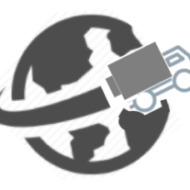
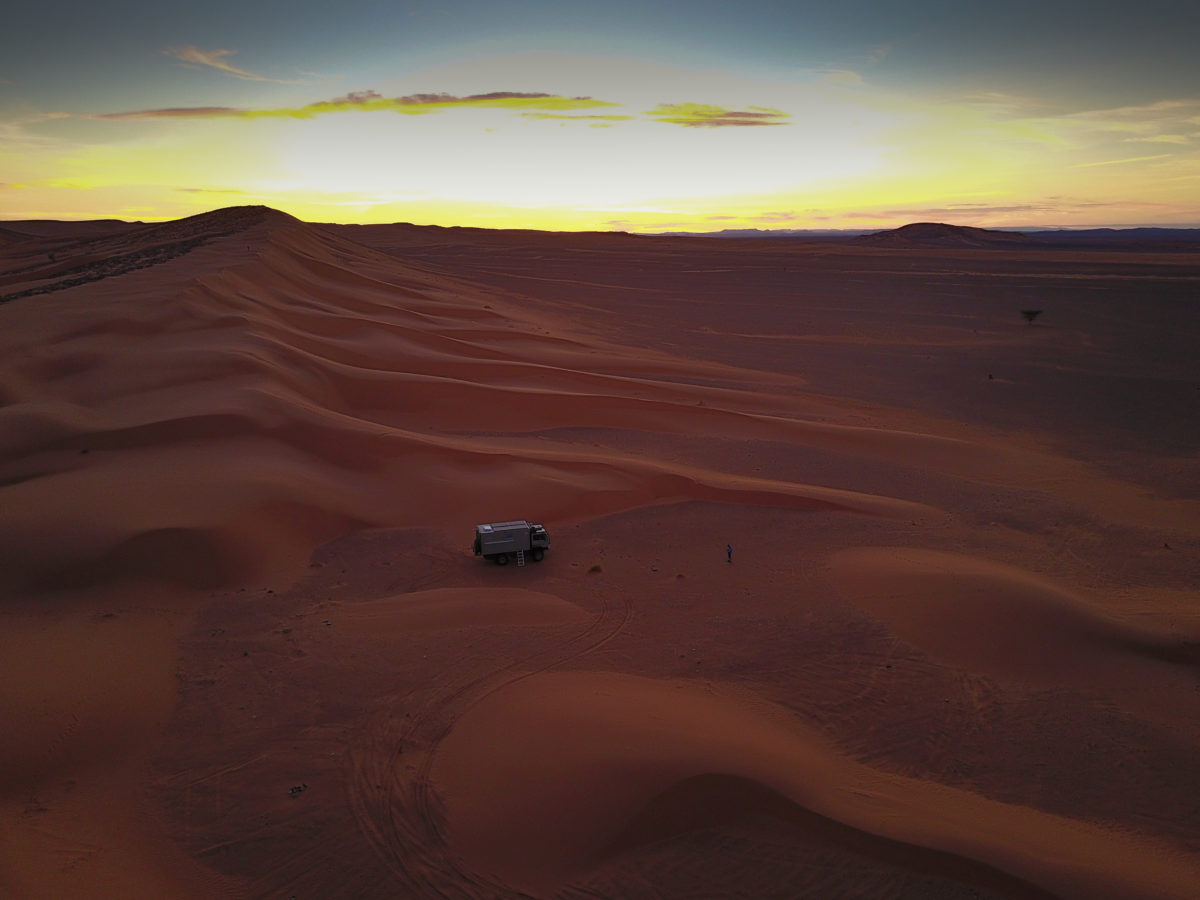
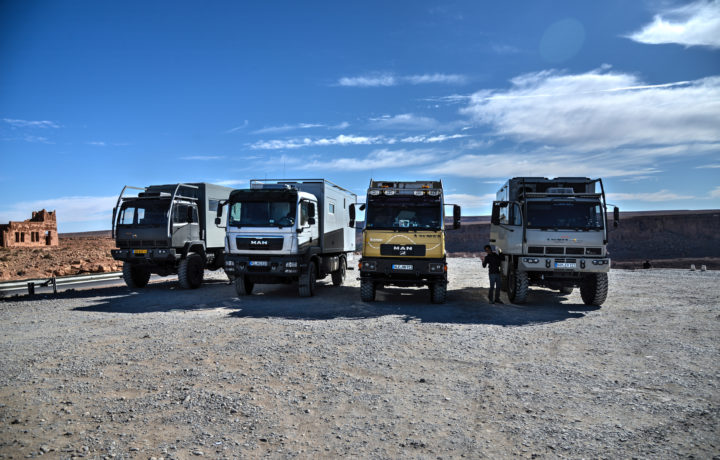

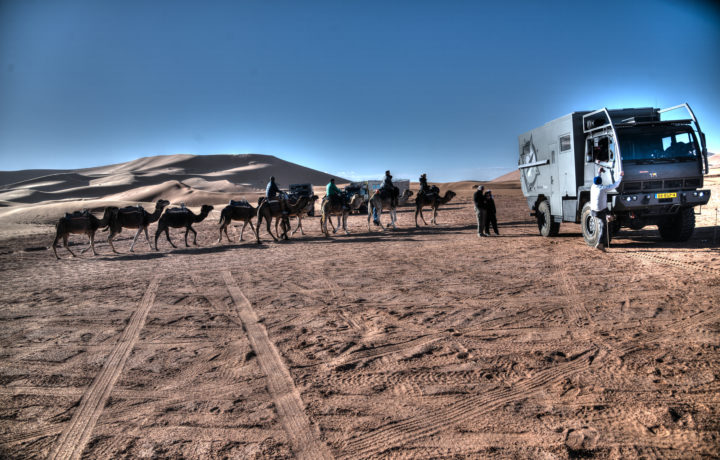
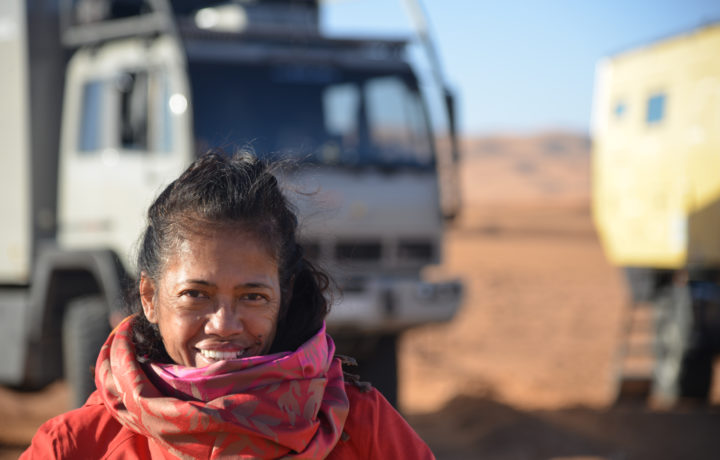
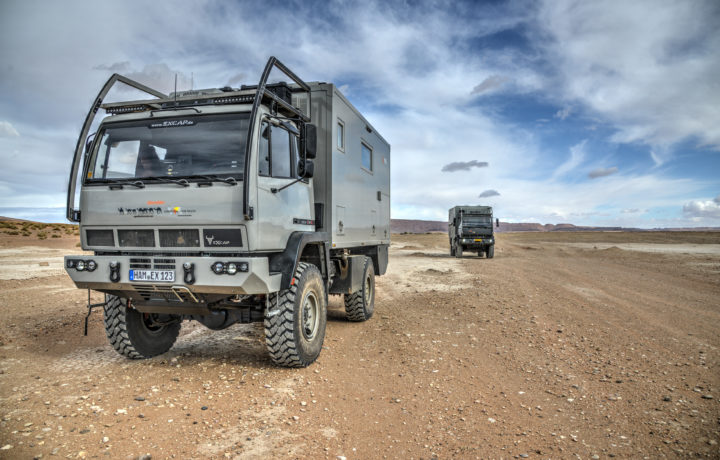
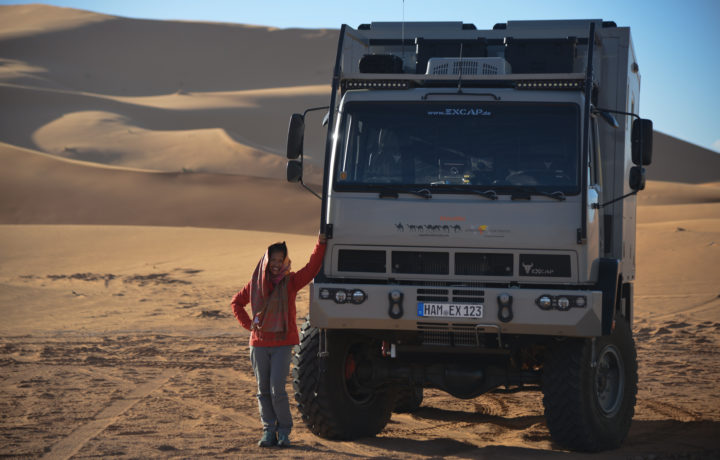
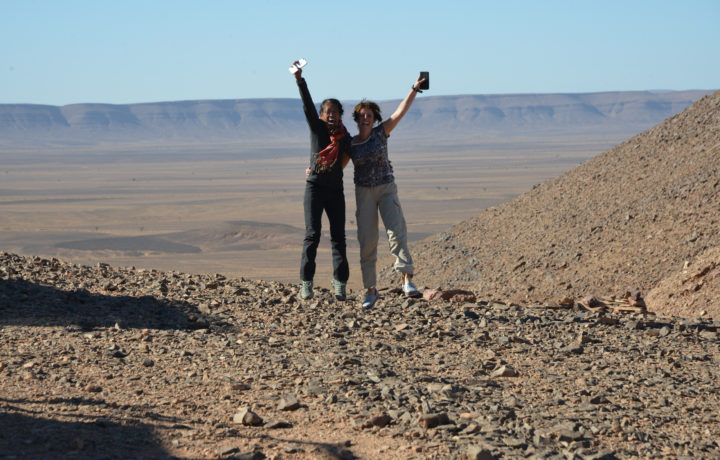

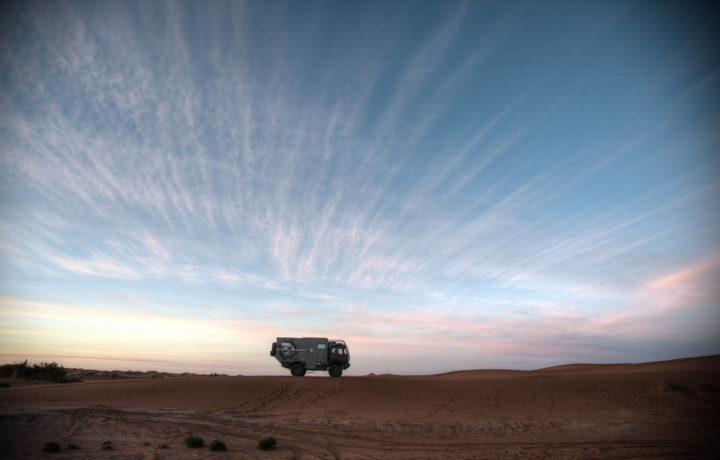
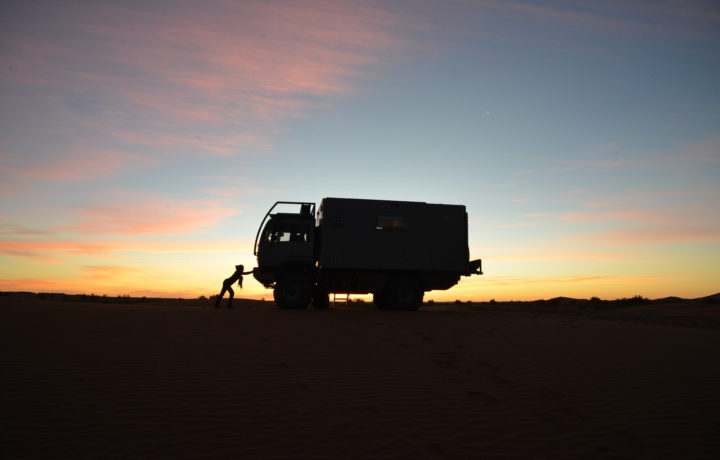
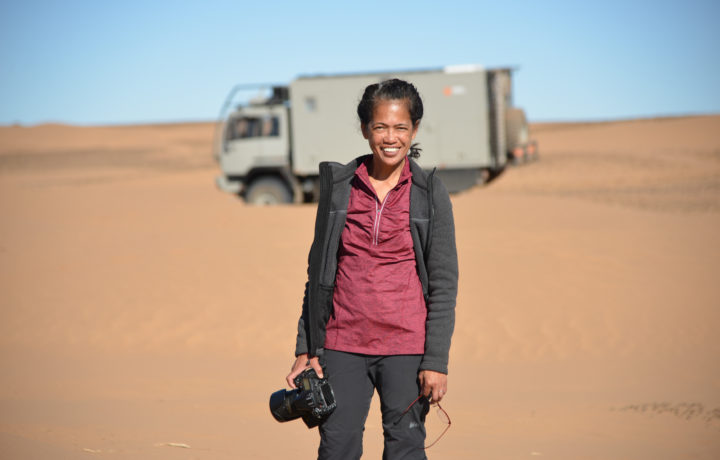
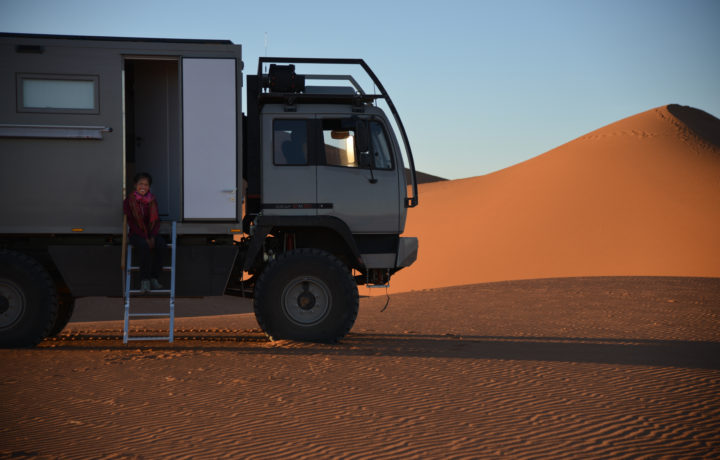
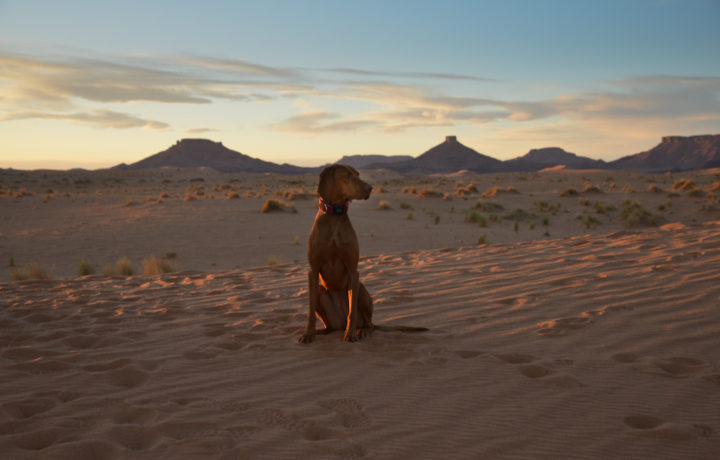
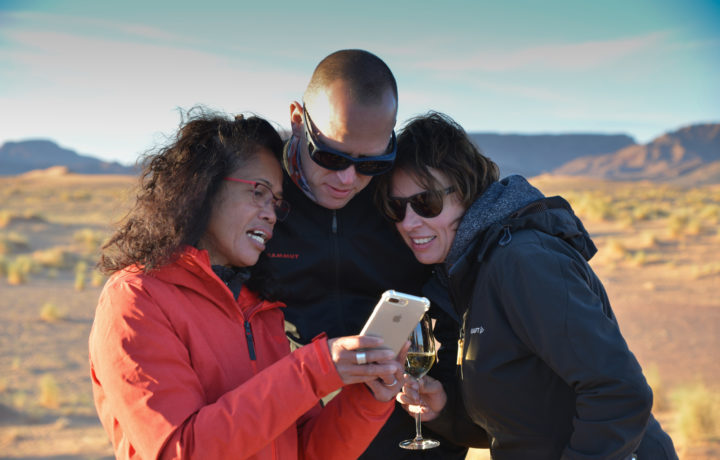

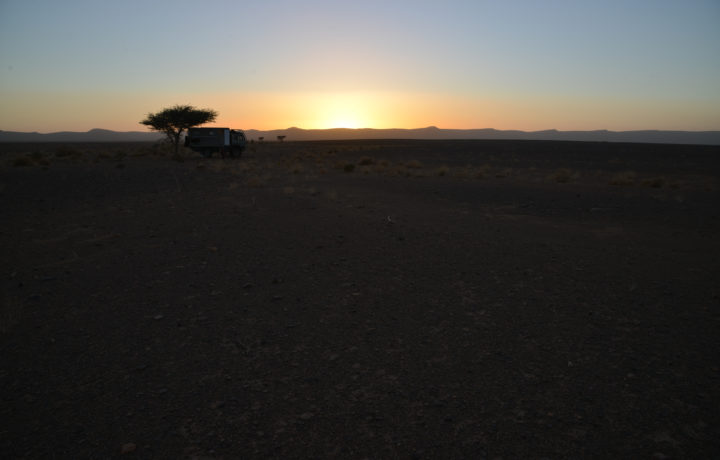
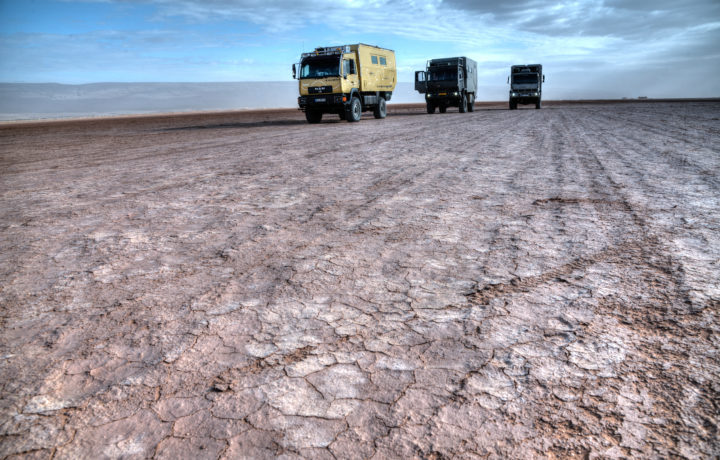

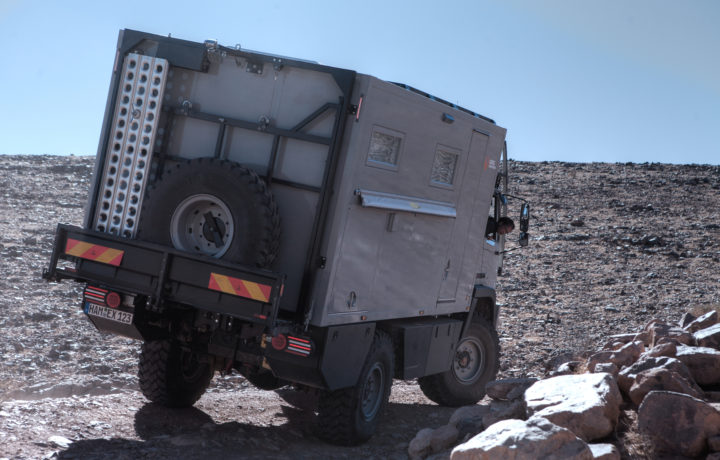
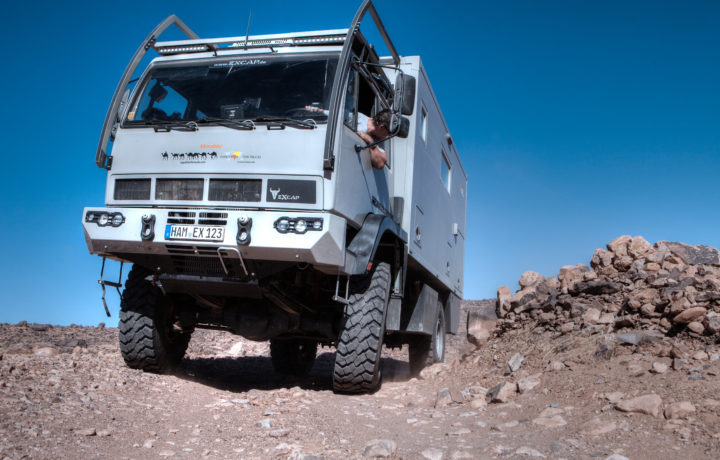


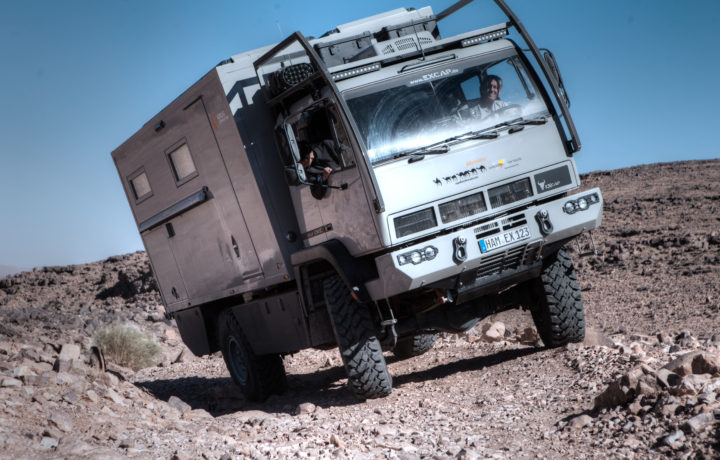

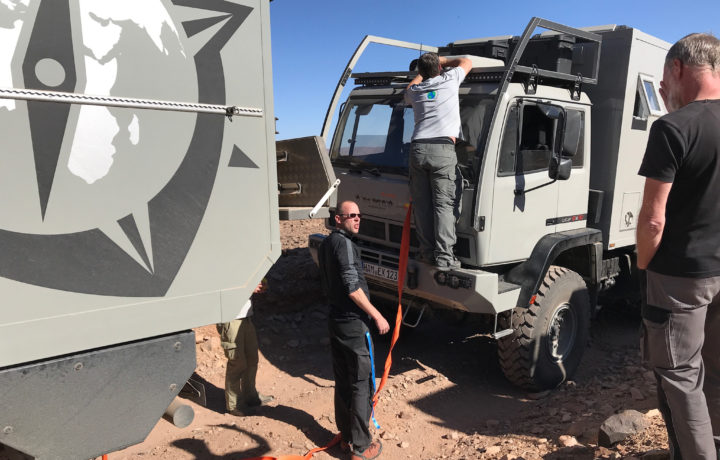
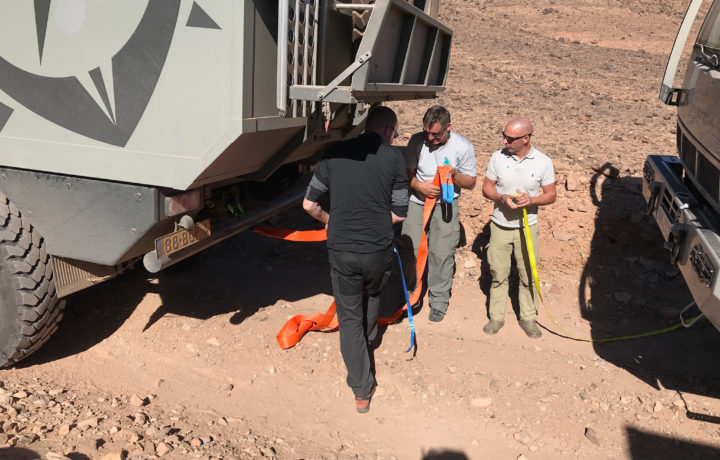

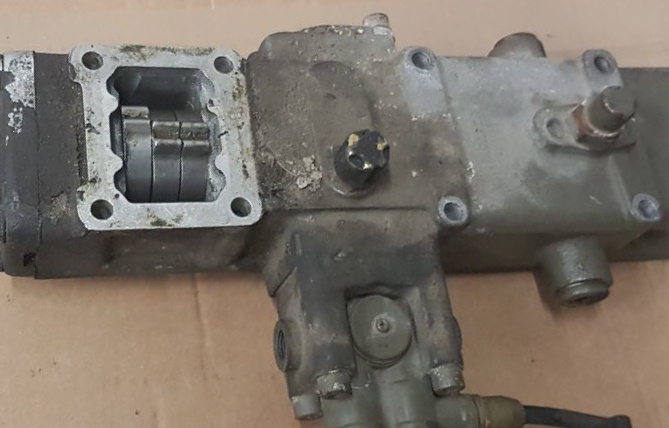
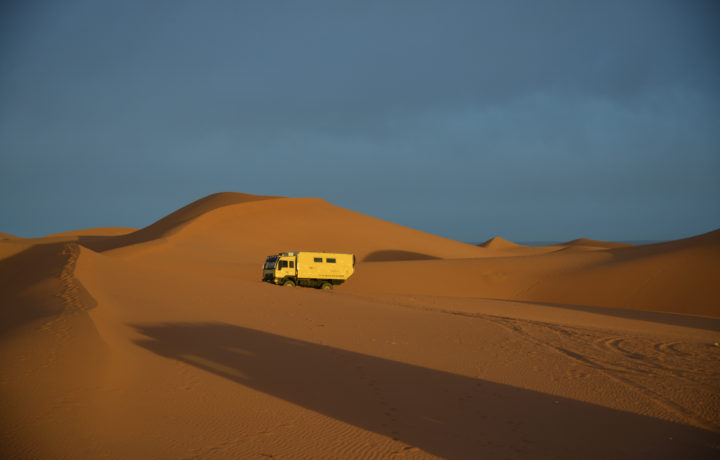

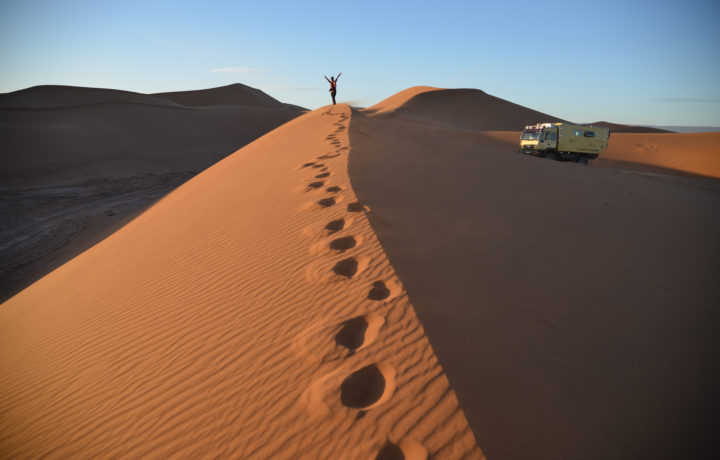
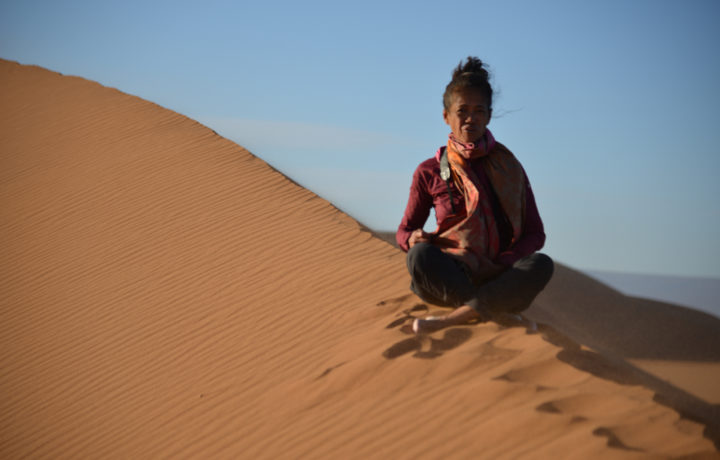




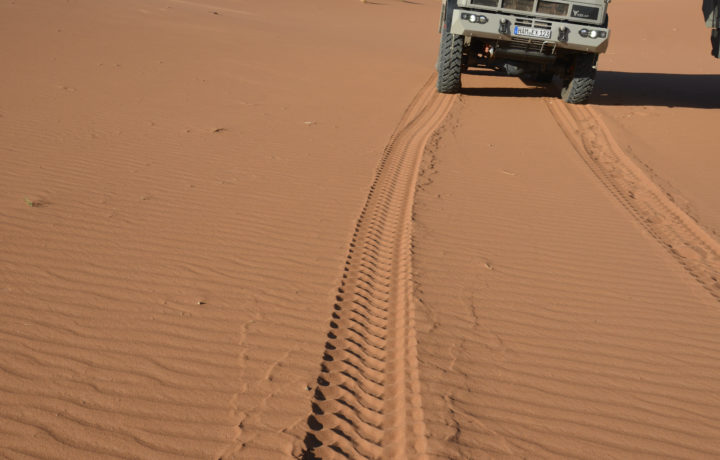
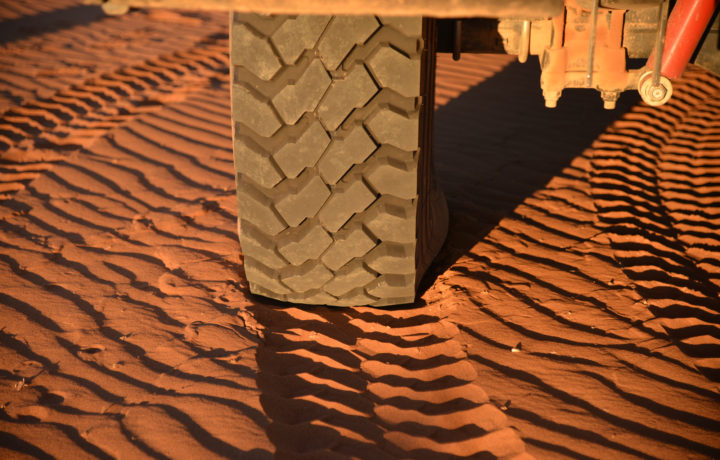
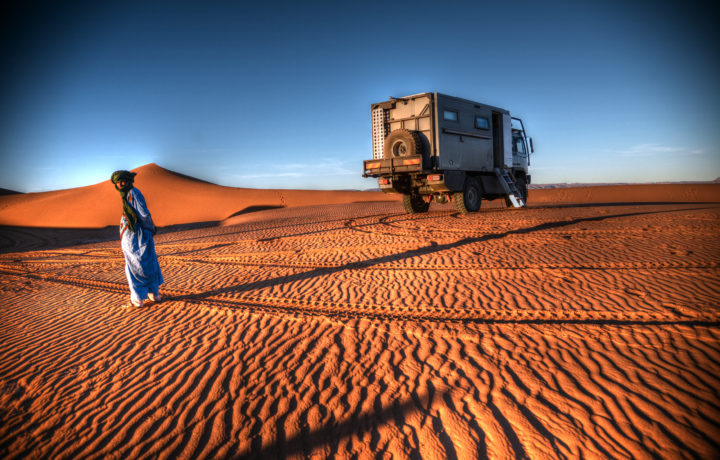
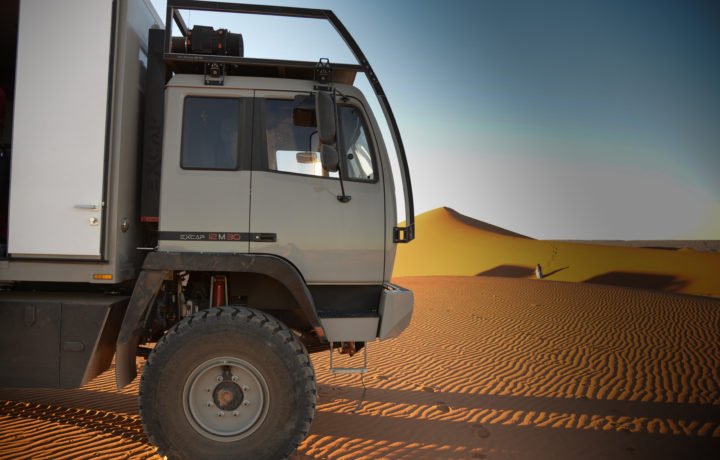
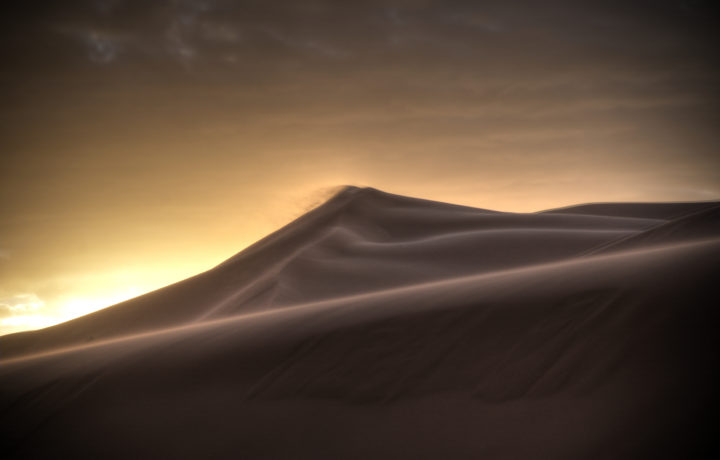
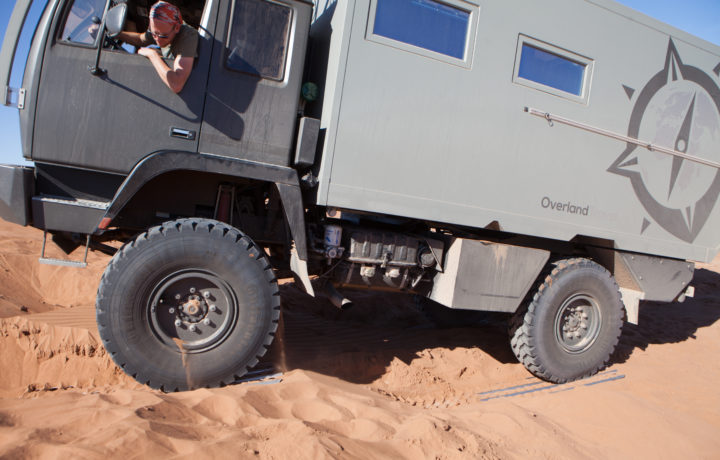
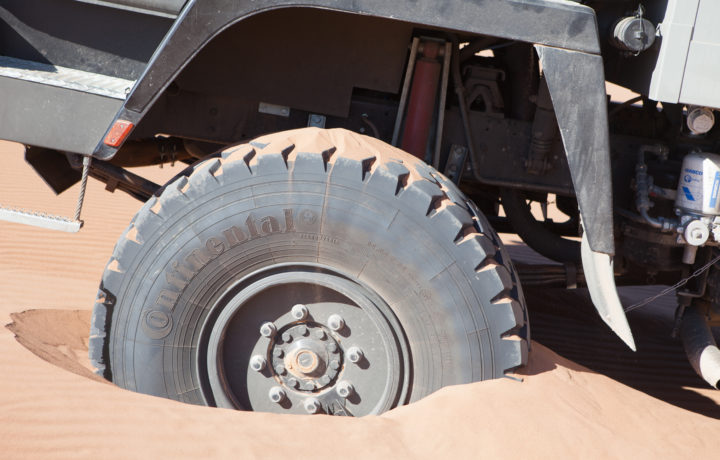
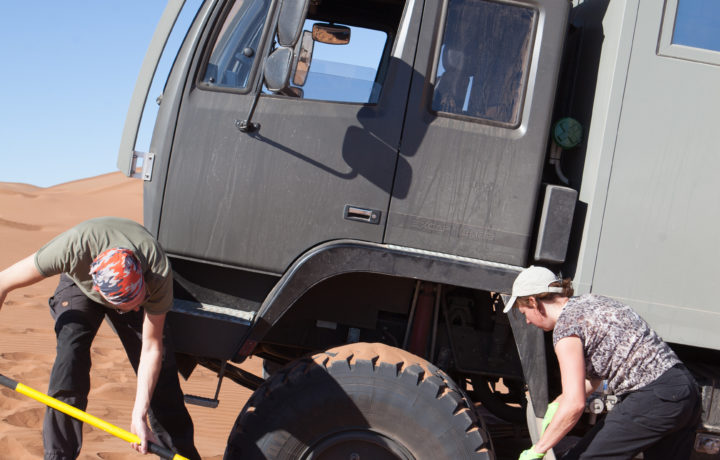
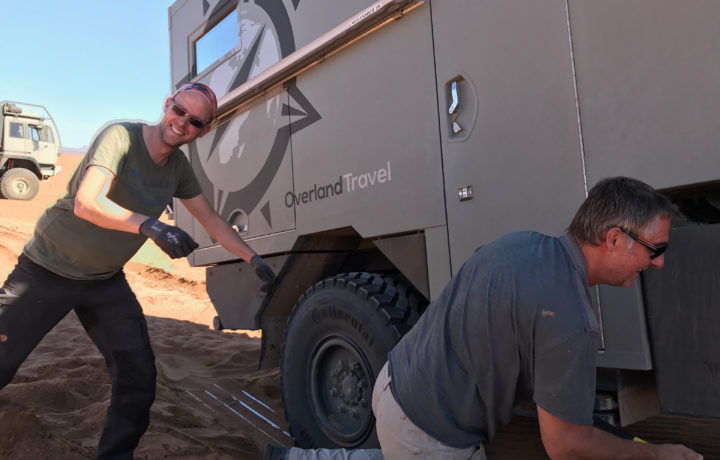
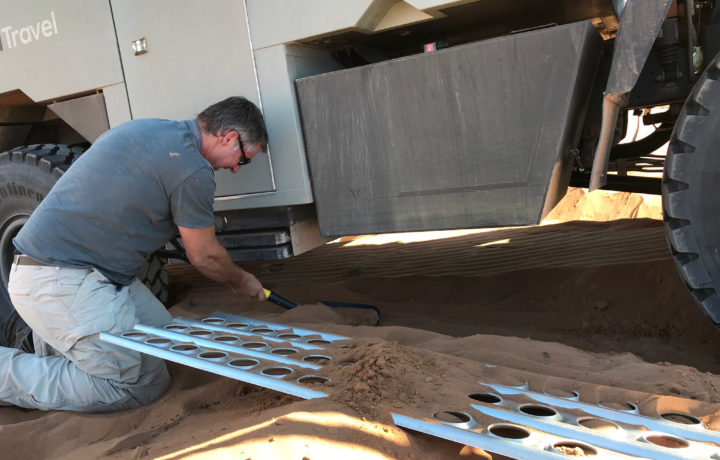

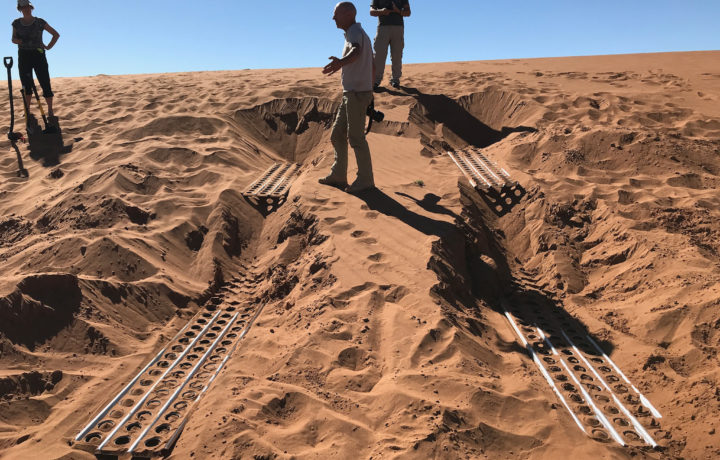


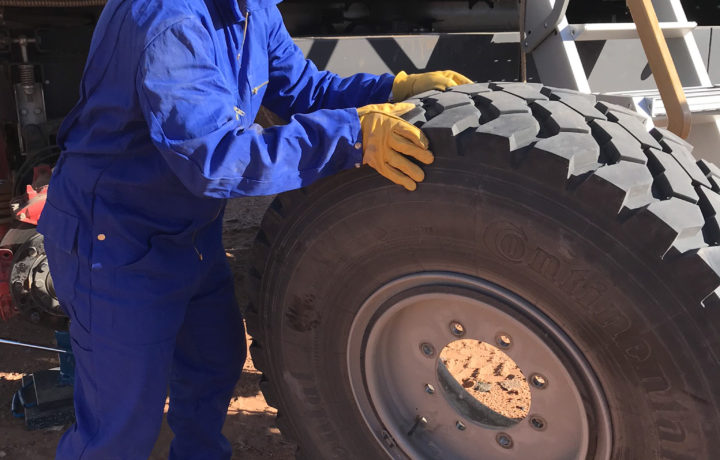
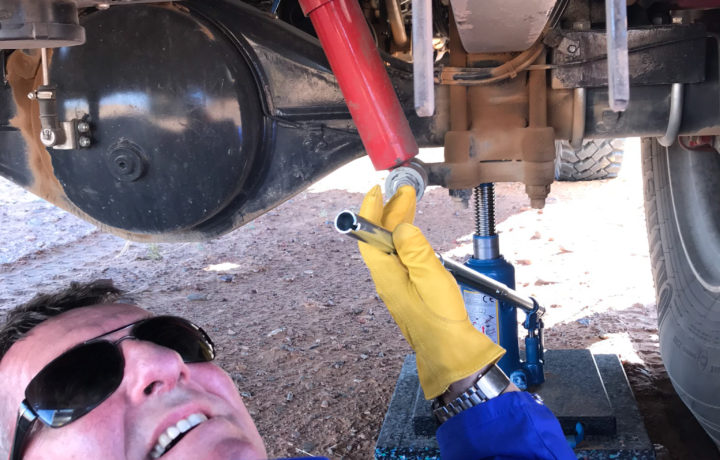
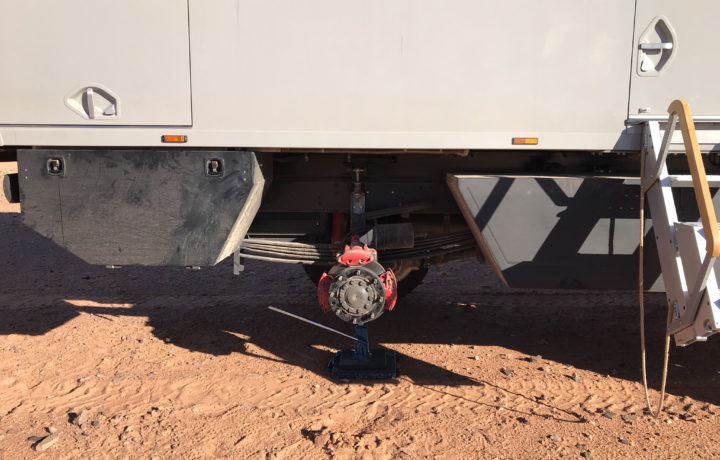
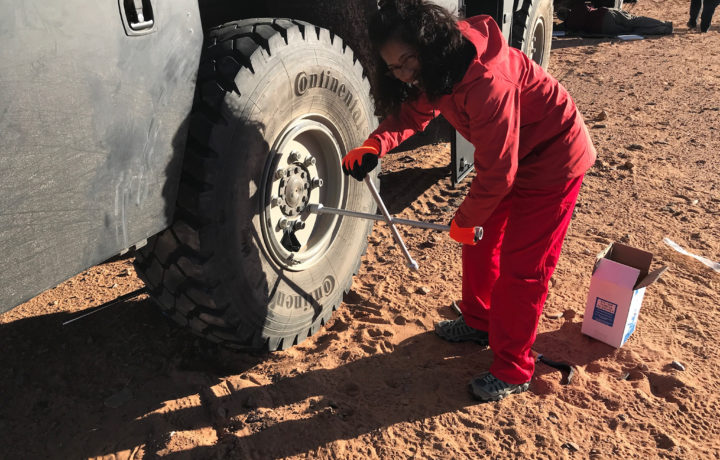
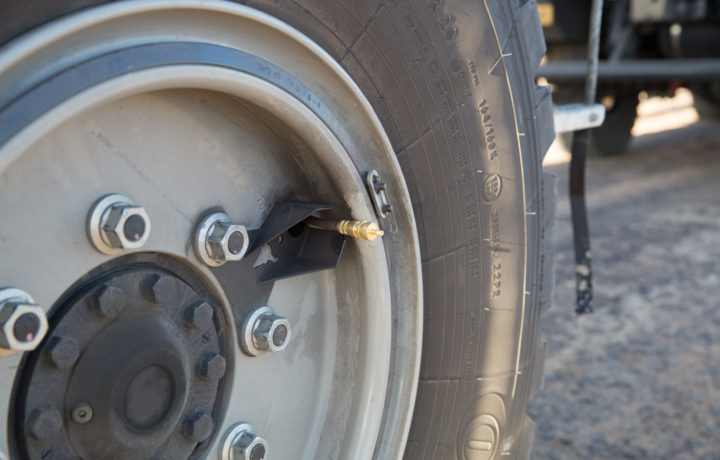
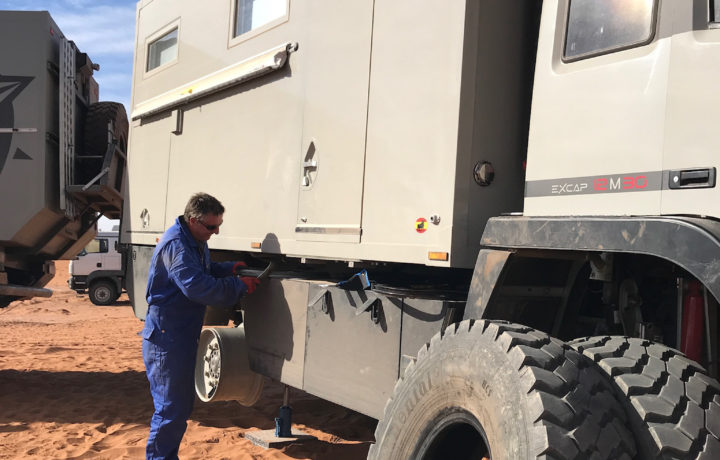
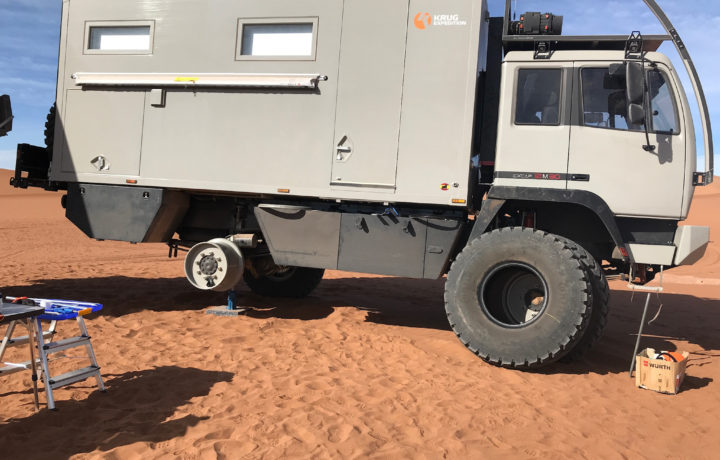
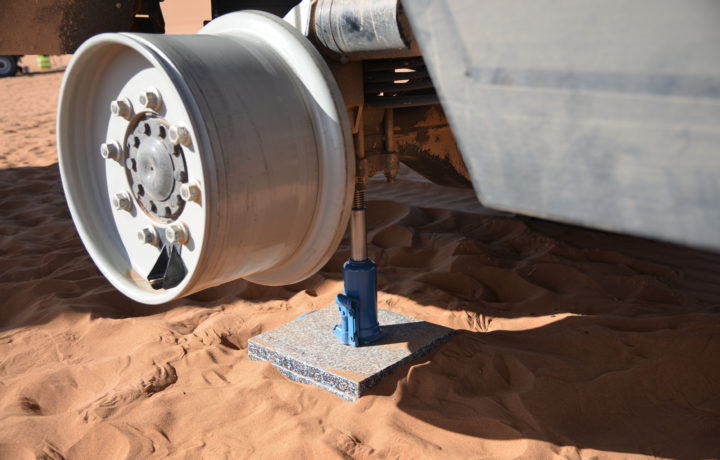
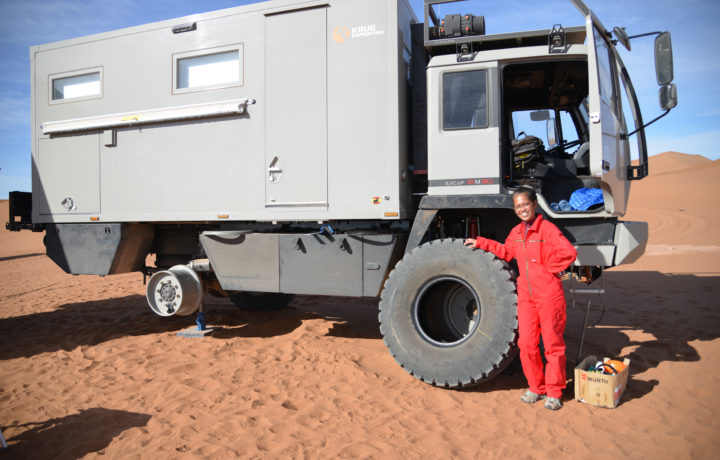
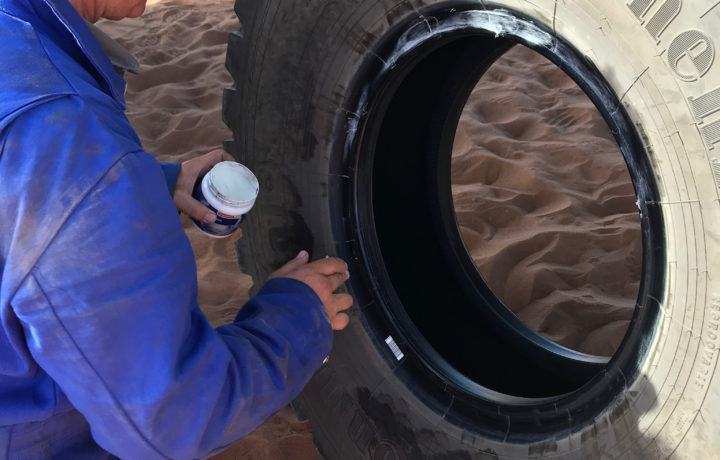
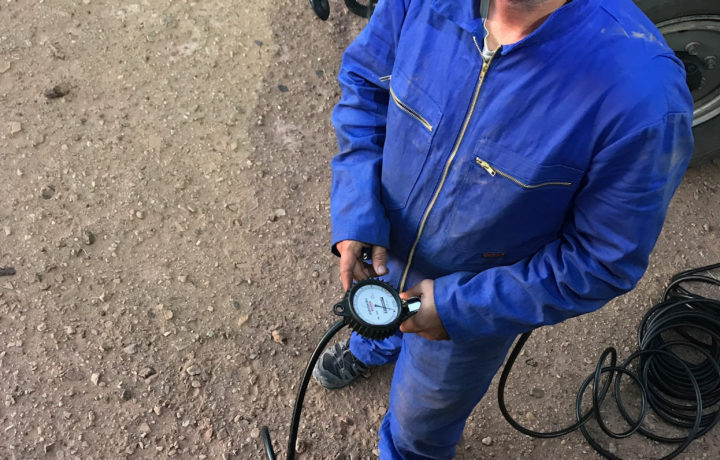

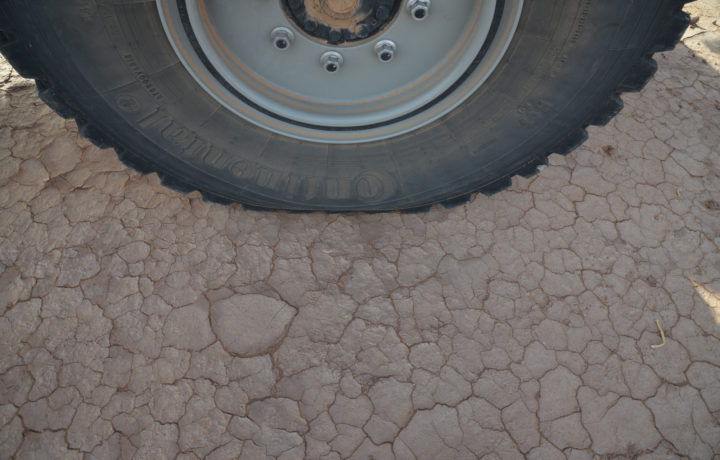
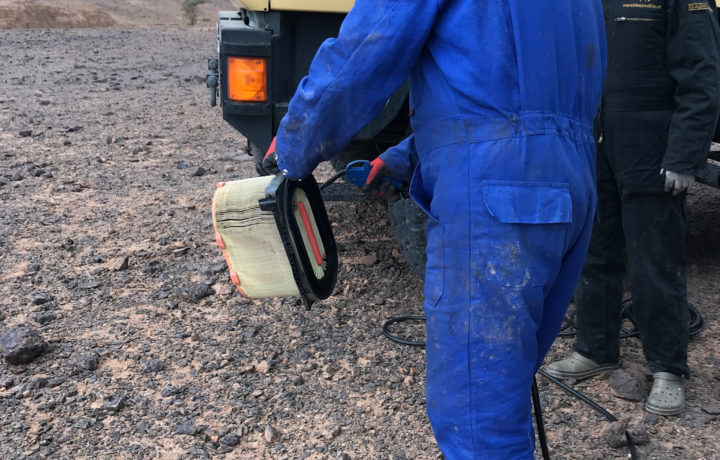

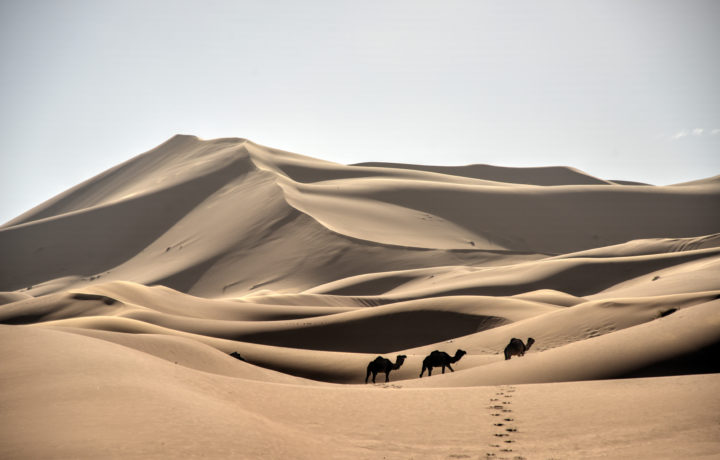

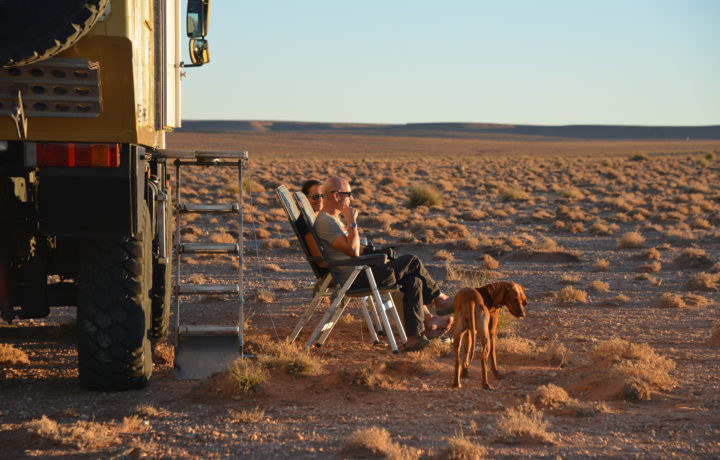
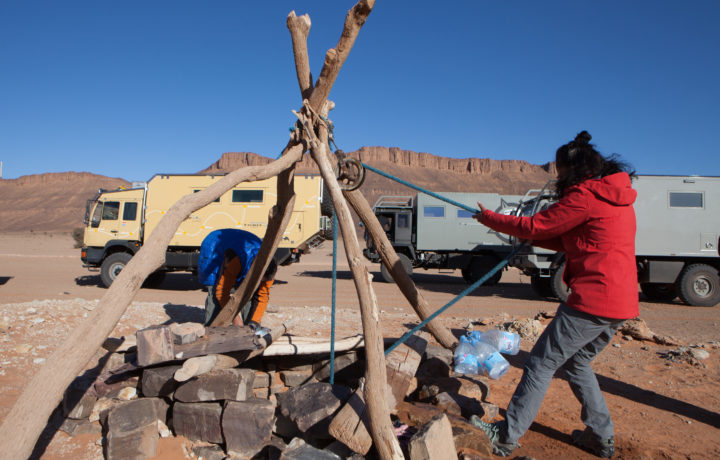
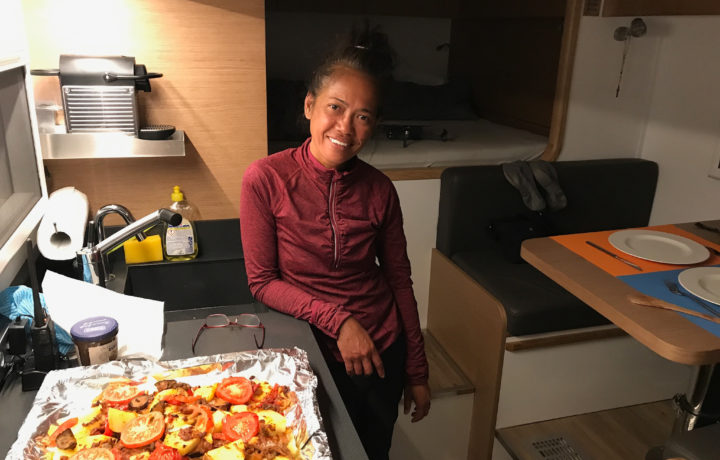
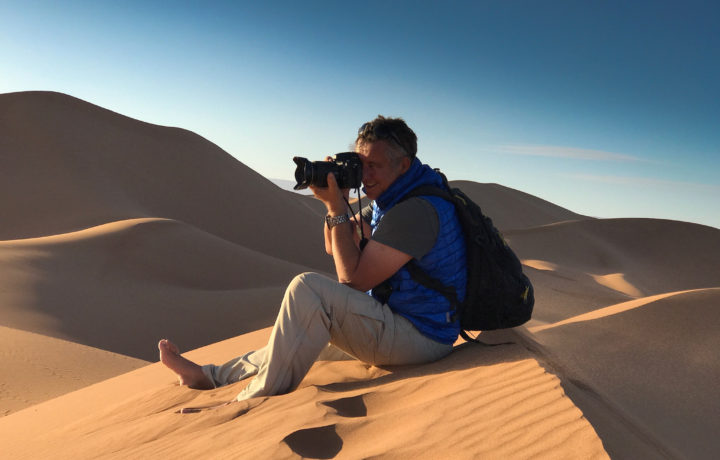
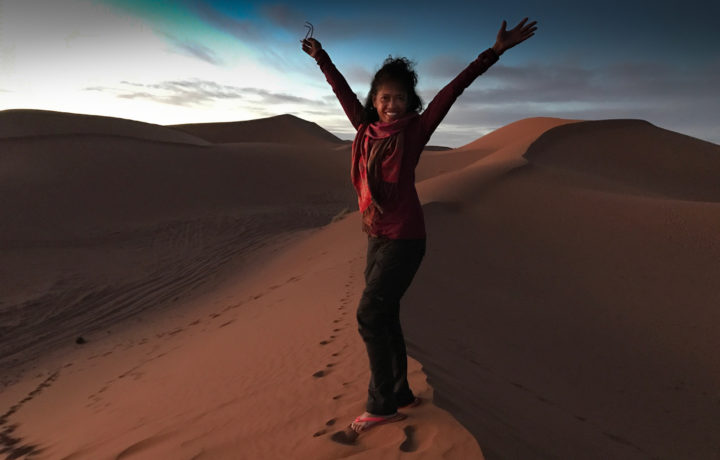
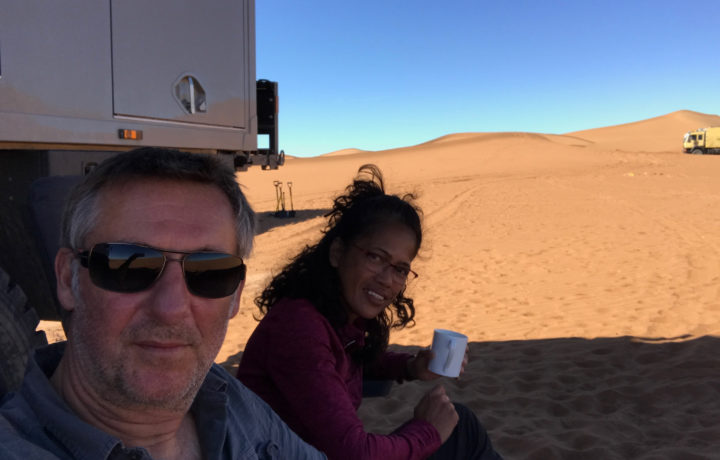
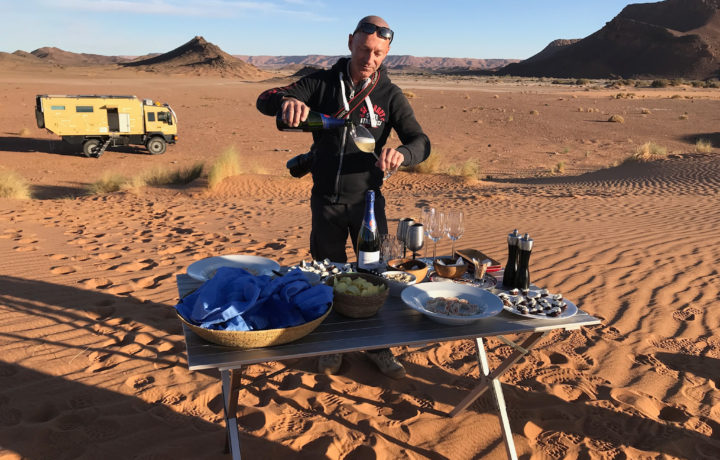
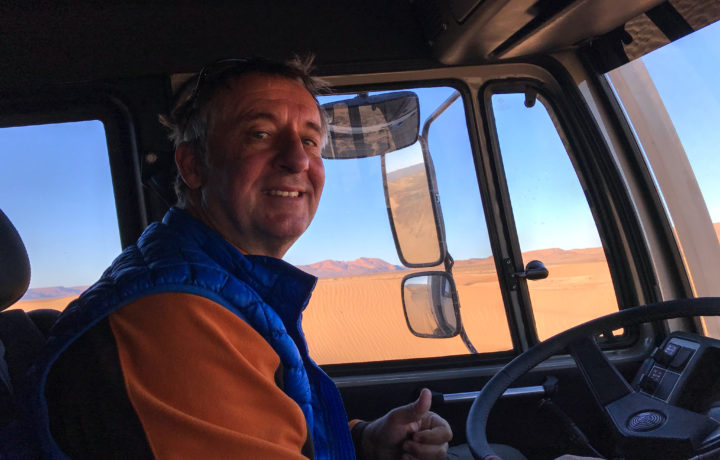
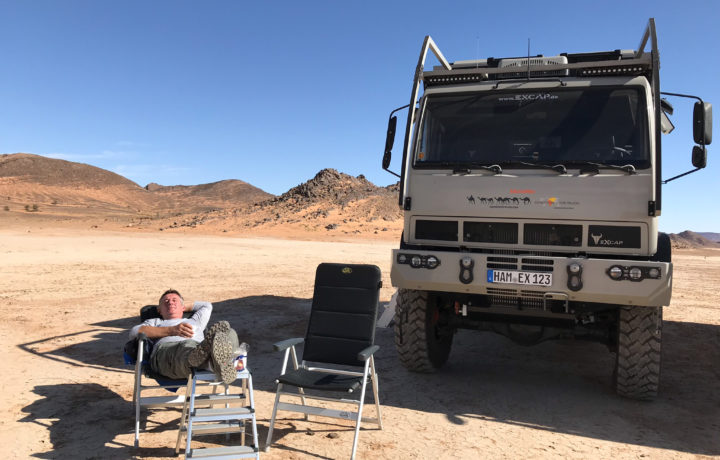
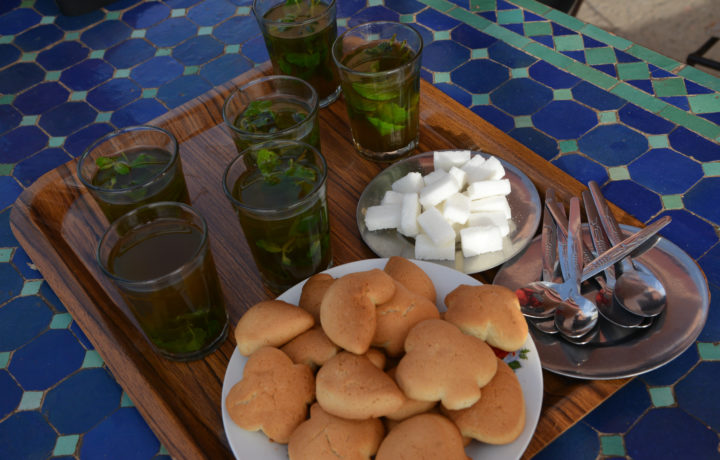
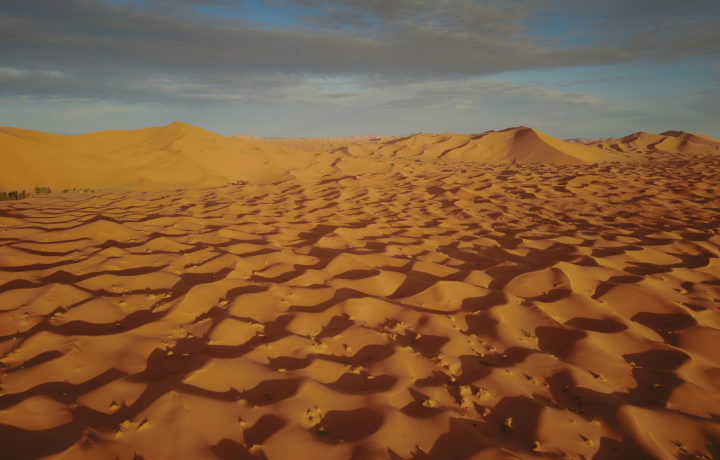
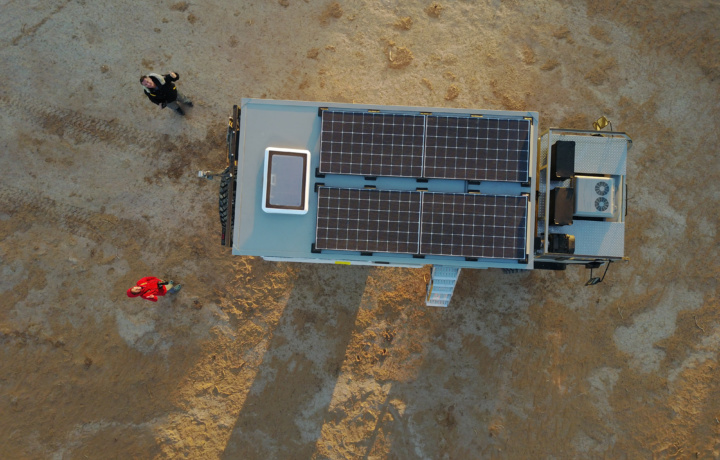


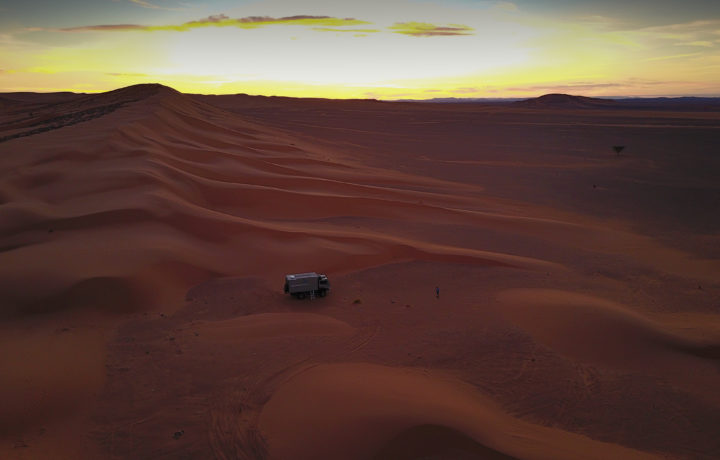
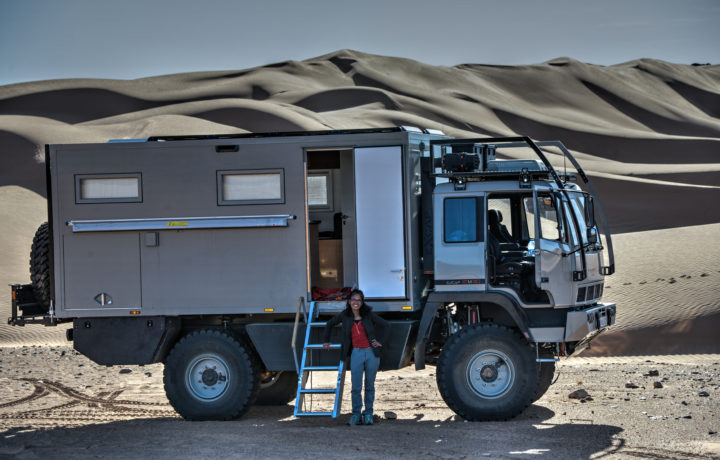

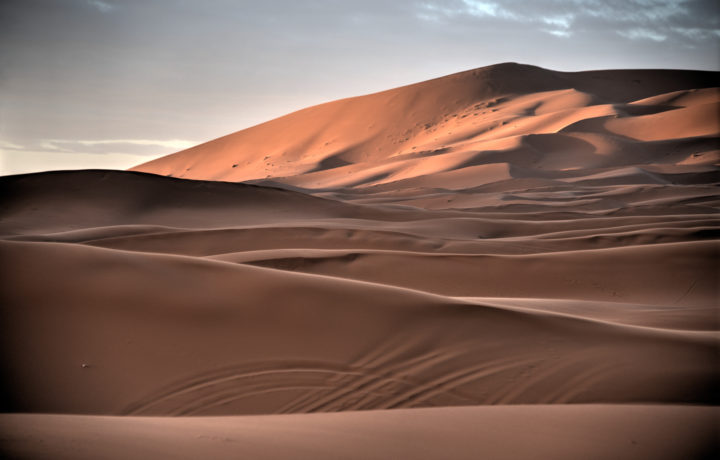
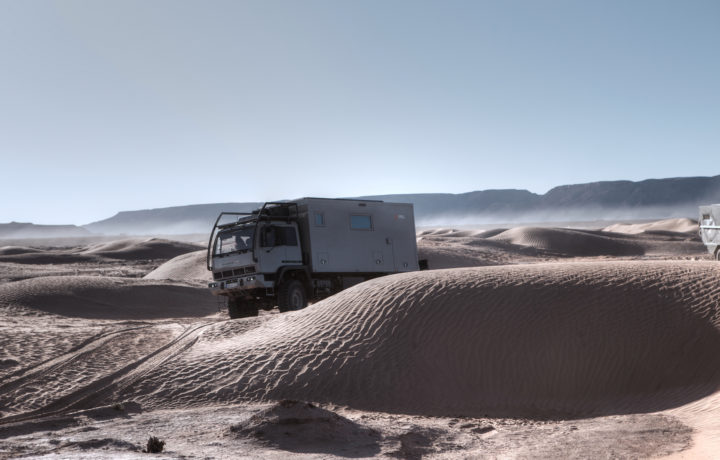
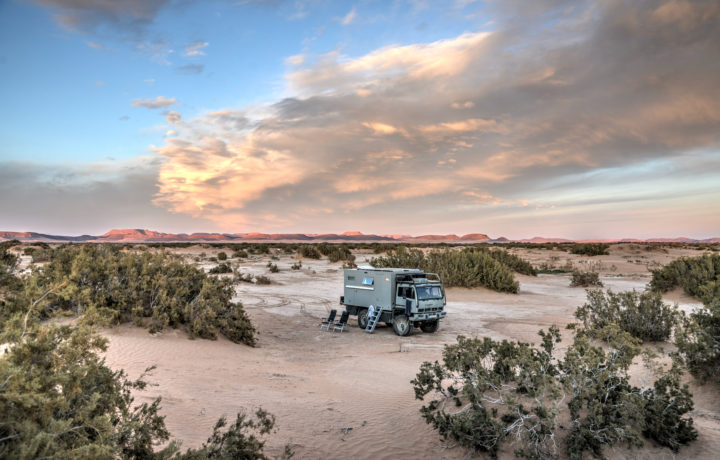
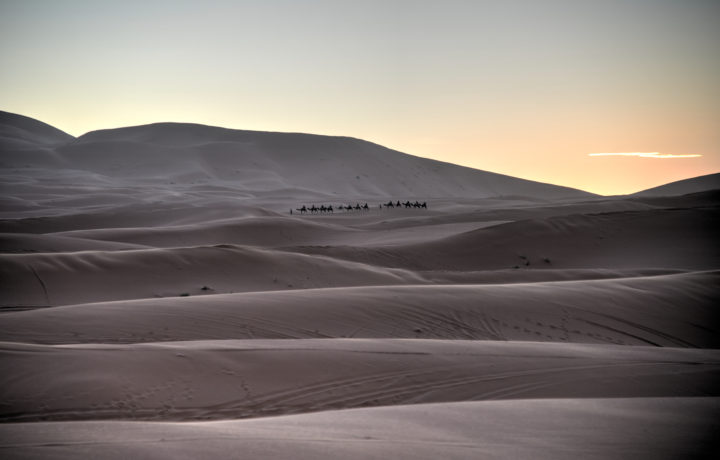

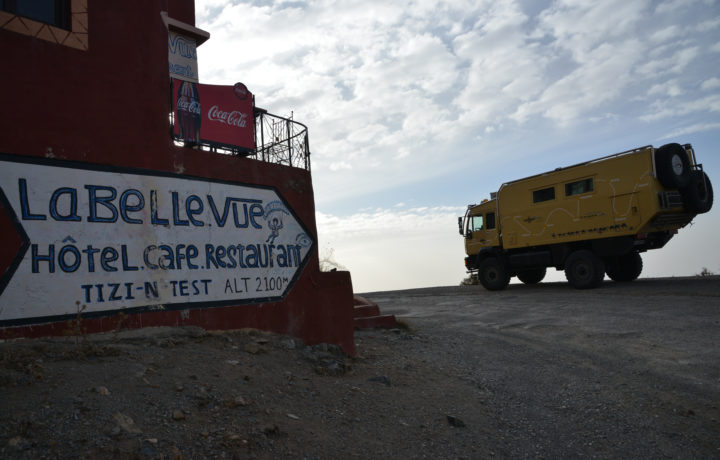
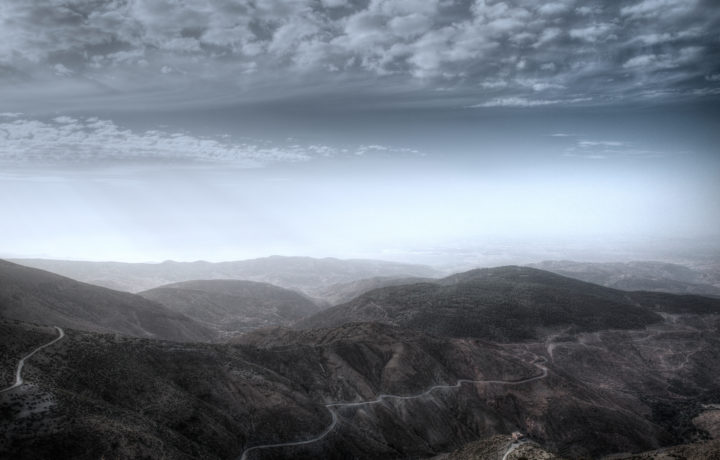
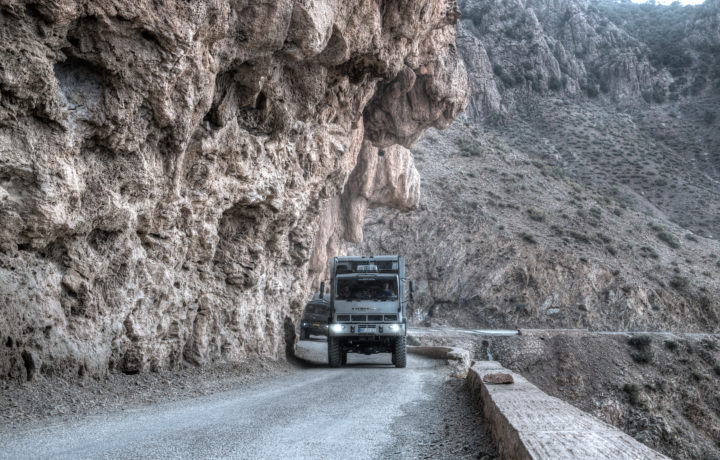
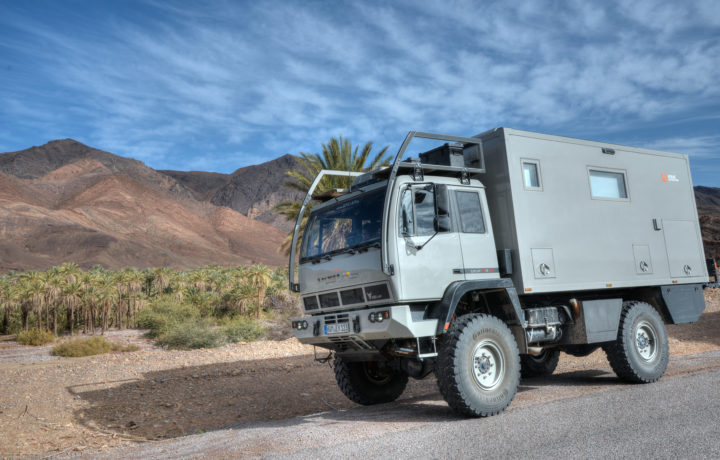
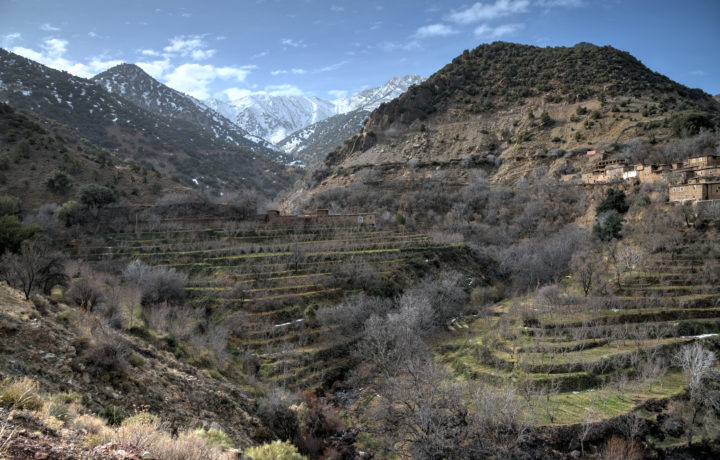
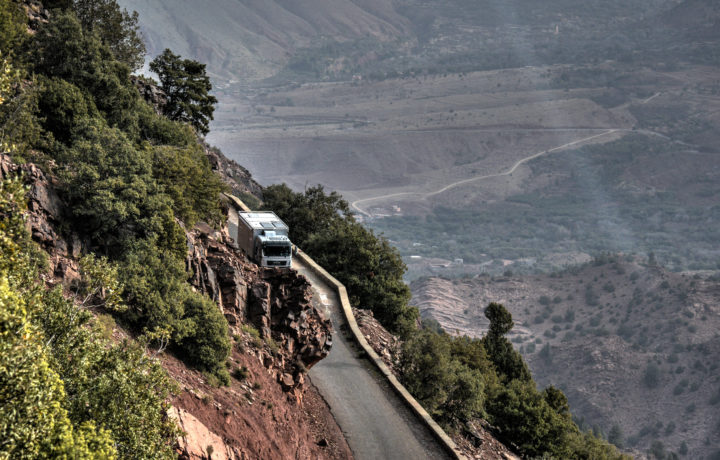
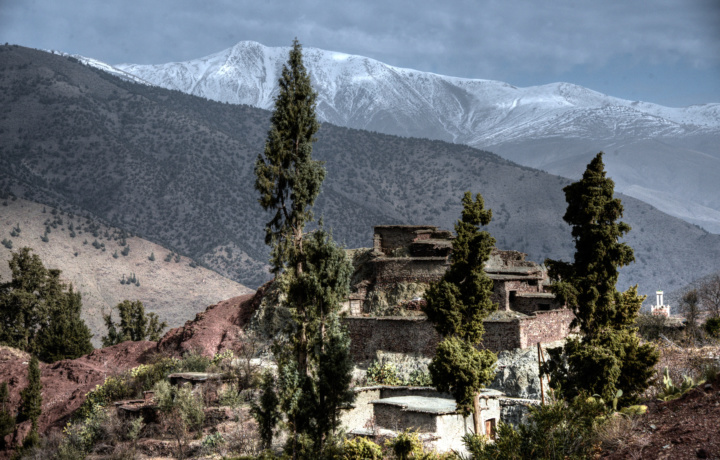

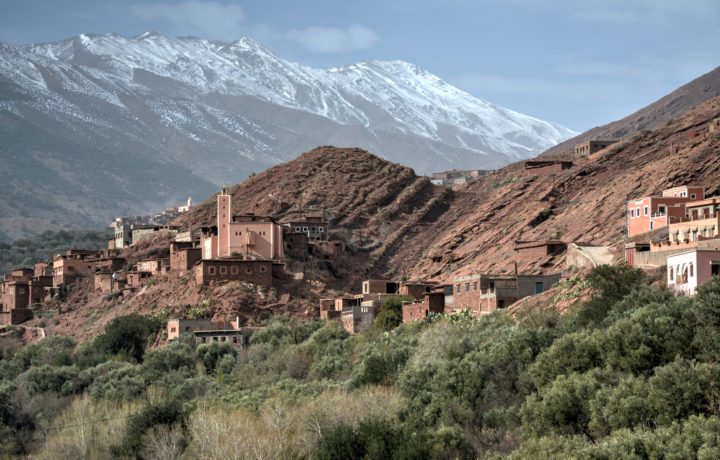
Hallo Dirk & Emily
Toller Blogeintrag, abgesehen von der Misere mit dem Truck, scheint die Tour wirklich abenteuerlich und lehrreich gewesen zu sein.
Wir werden nächsten Winter nach Marocco fahren, wollte eigentlich auch so eine Tour buchen, aber ich glaube wir werden uns vorher einige Skills aneignen, und wenn nicht, dann halt auf die harte Tour, “learning by doing”
Warme Grüsse aus Thailand
Hansi & Jacky
Hi Hansi,
hope your project is coming along – and you can take your new baby out to Morocco soon…
Thank you for taking the time to post up this amazing story. It sounds like a great adventure and an amazing experience.
Hi Edward – thanks for your comment – yes it was – we are just back from another trip to Iceland – more on that in a blog soon…
Hola, according to your recent experience, which truck brand and living cabin model would you recommend?
Saludos
Néstor
Hi Nestor,
sorry for the late response. We spent a lot of time f research before making our decision for truck and living cabin. But the deicison was based on our ‘requirememts’ and it is not possible to give you a blanket recommendation. We are very happy with our choices so far.
Thanks (Saludos),
Dirk